South Africa's Greatest Road Trip
Calling all road trippers! Get ready because you’re in luck! South Africa has one of the world’s best drives and it’s calling you to come along for the ride. The Garden Route is a 300km stretch of road from Mossel Bay to Jeffrey’s Bay along the southern coast of South Africa. As you make your way through the leisurely winding road, watch the shades of nature change. This region is bursting with so many different types of landscapes, including mountains, forests, lakes, rivers, beaches and quaint towns just waiting to be explored. There are plenty of outdoor activities available along the Garden Route so be sure to bring your taste of adventure. Just like South Africa has something for everyone, so does the Garden Route, so let your hair down and enjoy all the pleasures that the road has in store for you. Make sure you give yourself time to enjoy it. After all, “it’s not about the destination, it’s about the journey.”
We’ll start our journey from East to West along the Garden Route to the Whale Route (but you can certainly take the trip in reverse order):
The Garden Route
Jeffrey's Bay
Surf’s up dudes! Jeffrey’s Bay, also known as JBay, is home to some of South Africa’s best surfing and beaches. Surfers from around the world come here to catch waves and compete for titles. The most consistent waves can be caught from May to September. Never surfed before? Take a lesson from one of the local surf schools or enjoy other activities such as kite surfing, windsurfing, snorkeling, stand up paddle boarding (SUP), horseback riding along the beach or just lying on the sand working on your tan. There are also walking trails and birdwatching in the nearby nature reserves of Kabeljous Estuary, Noorsekloof and Seekoei.
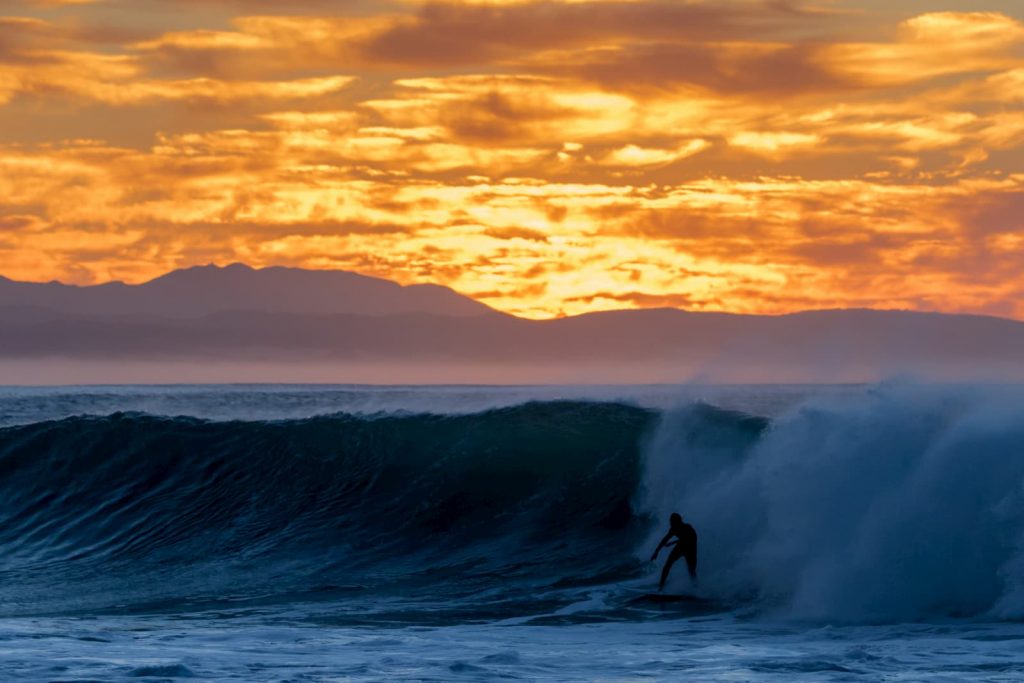
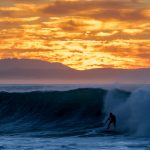
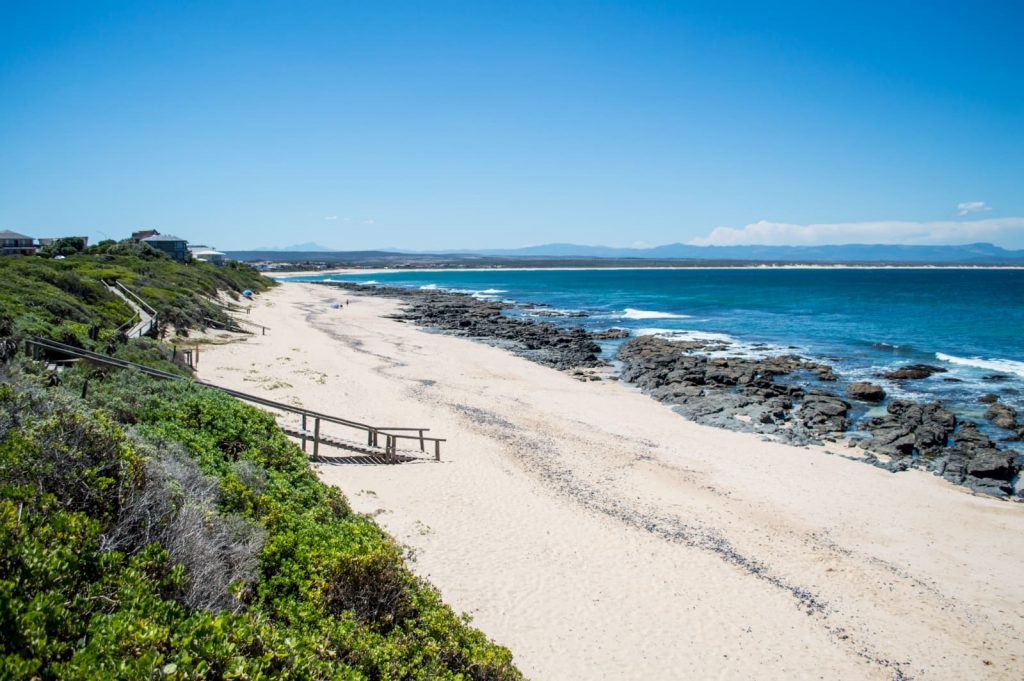
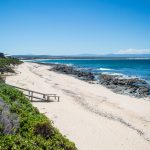
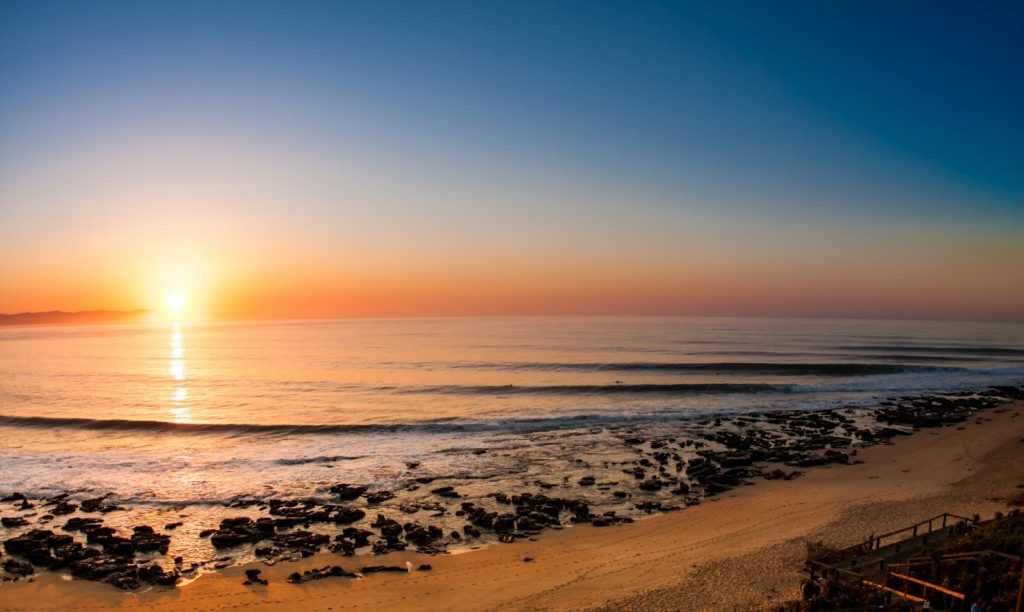
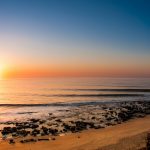
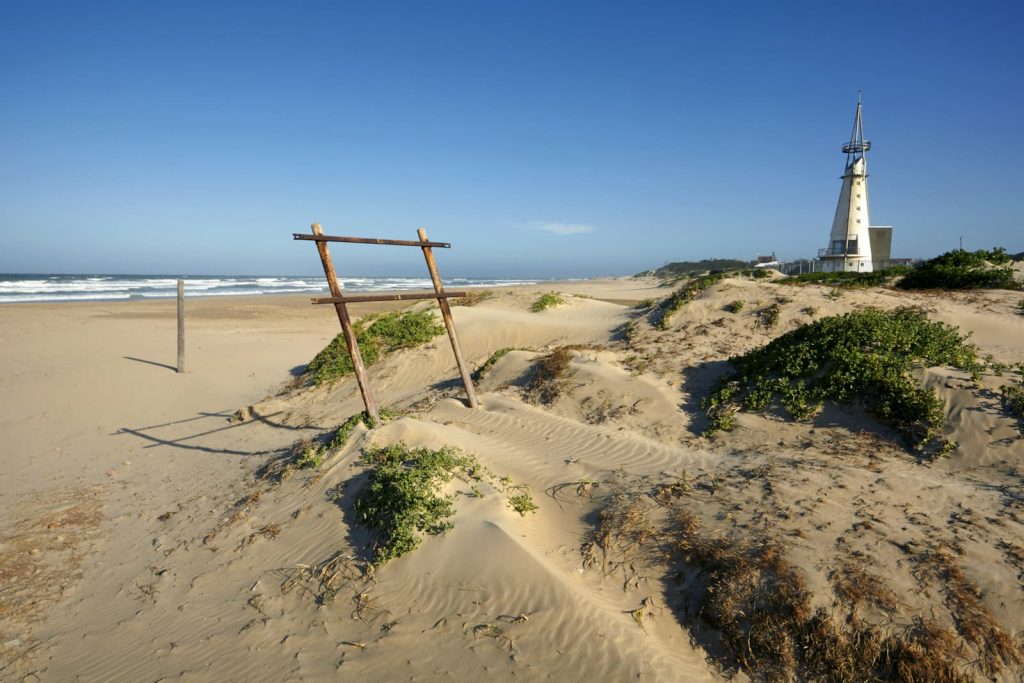
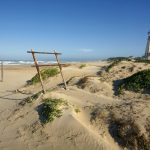
Tsitsikamma National Park
Tsitsikamma National Park, meaning the place of much water, is a wonderful collection of landscapes and activities, including rocky coastline, mountains, forests and gorges in the heart of the Garden Route. Get ready to “get lost” in this 80 km stretch of natural beauty. Here, beautiful sandy beaches are mixed in with rocky coastline. Lose track of time while working on your tan or watching the Indian Ocean breakers (waves) crash against the rocky shore. Be on the lookout for black oystercatchers, cormorants, gulls and kingfishers along the coast and around tide pools. Take a hike through the lush Tsitsikamma Forest while bending your neck back to gaze up at the gigantic yellowwood and milkwood trees soaring overhead. Whiz along the top of the forest on the Tsitsikamma canopy (zip line) tour. Step on up and take a thrilling walk across the Storms River suspension bridge which lies just 7 meters above the mouth of the river. Can you tell that this place has a lot to offer? For a more aquatic adventure, paddle your way by kayak up the Storms River gorge for a deeper look at Mother Nature’s wonders. For a legendary, albeit strenuous hiking experience, make your way to the Otter Trail for a 5-day coastal trek. Do your research on the trail and plan well in advance if you wish to hike here as permits are required and there are some restrictions. Other hiking trails in Tsitsikamma include the Blue Duiker Trail (6 km), Mouth & Lookout Trail (4 km), Waterfall Trail (3 km) and the Boardwalk Trail (1 km). Whew! I’m out of breath just describing it all!
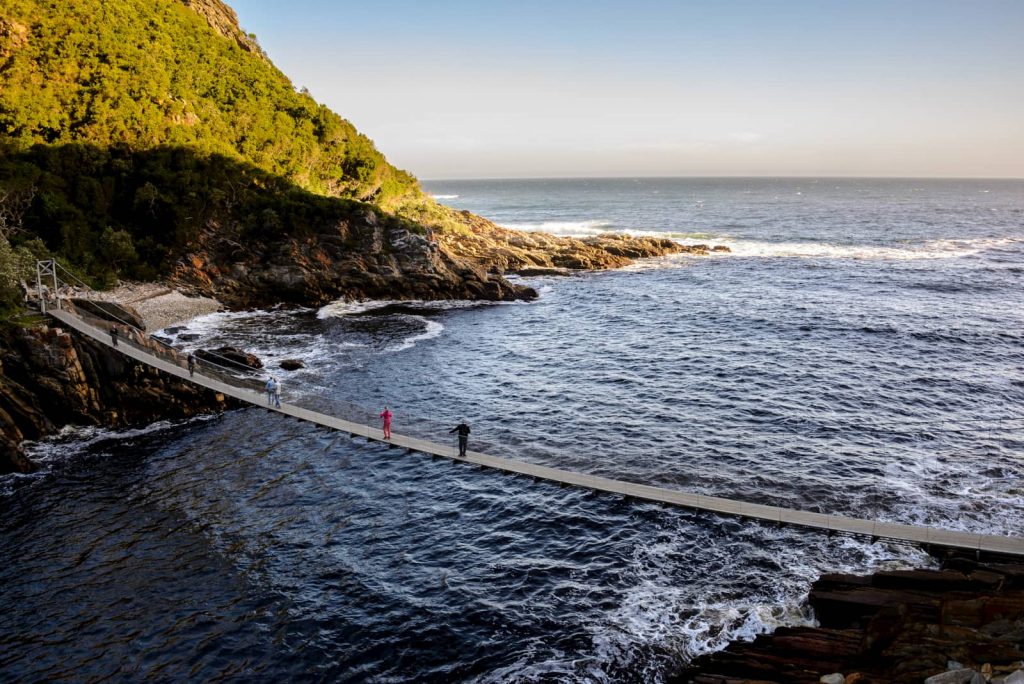
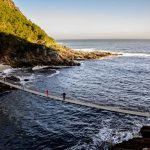
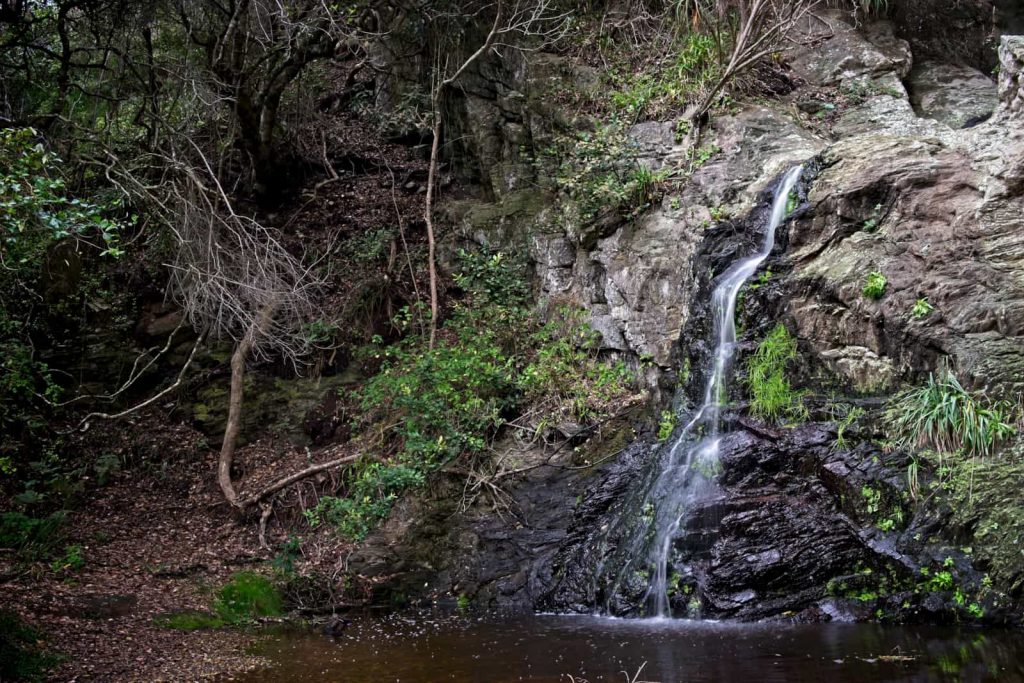
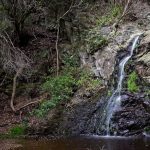
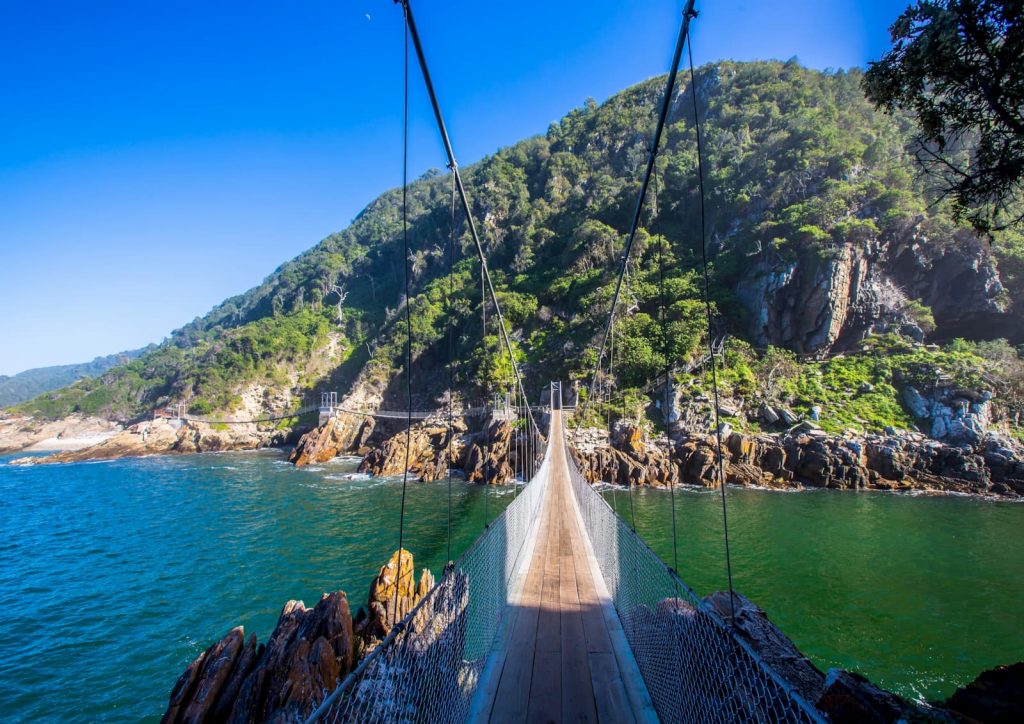
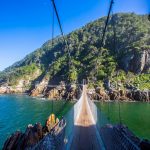
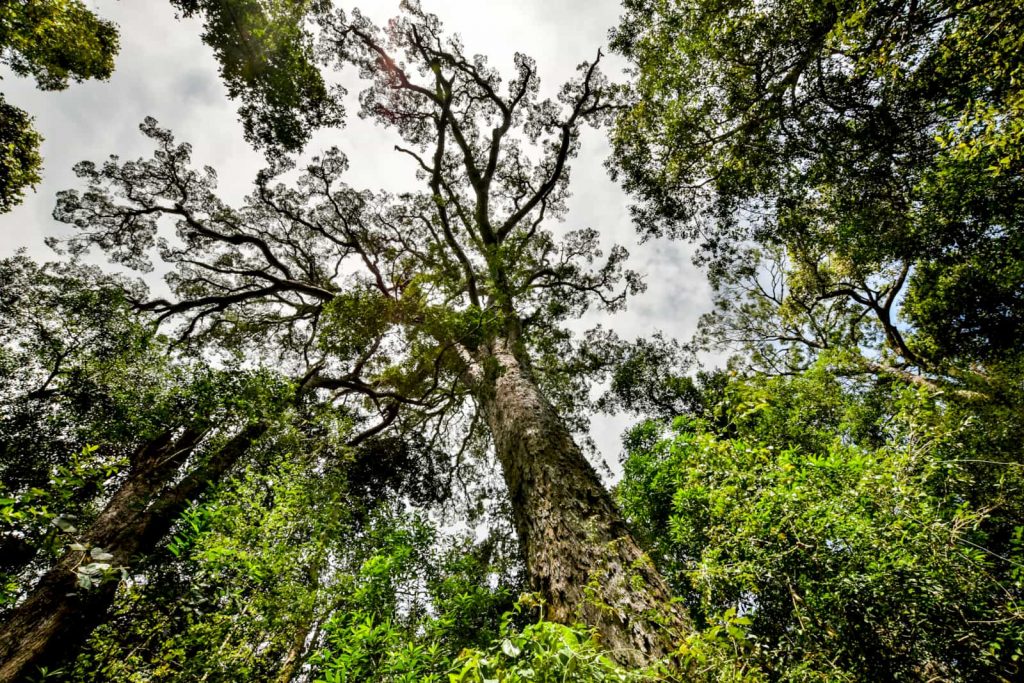
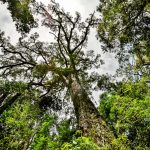
Bloukrans Bridge Bungee Jump
If someone told you to jump off a bridge, would you? This might be the only time that you answer, “yes!” Bloukrans Bridge is the highest commercial, natural bungee jump in the world, which hovers over the Bloukrans River and is surrounded by forest. If you’ve got the guts, which I wouldn’t blame you if you don’t, step on up for the 200+ meter plunge toward the Earth below. You’ll surely feel the rush as the adrenaline shoots through your body while you’re screaming like a baby. So, what’s it going to be? Is your answer, “yes?”
If so, contact Face Adrenalin: https://www.faceadrenalin.com/

Plettenberg Bay
After adventuring through the Tsitsikamma Forest, hop in the car and make your way west to Plettenberg Bay or “Plett” for short. Here most people love to chill out on the bay’s unspoiled sandy beaches, soaking up the warm rays. However, if you find yourself getting restless at the beach, opt for canoeing, boating, hiking or many other outdoor activities. Hike the Robberg trail around the peninsula for beautiful views of the bay and Indian ocean, cool geological features and a local fur seal colony. Whales and other marine life can also be seen from the trail depending on the season, so keep an eye out. After a gratifying hike or relaxing day at the beach, head to town and take your pick of Plett’s many restaurants and bustling nightlife scene. During your time here you’ll find that Plett is a great place to get away from it all, wind down and have a good time.
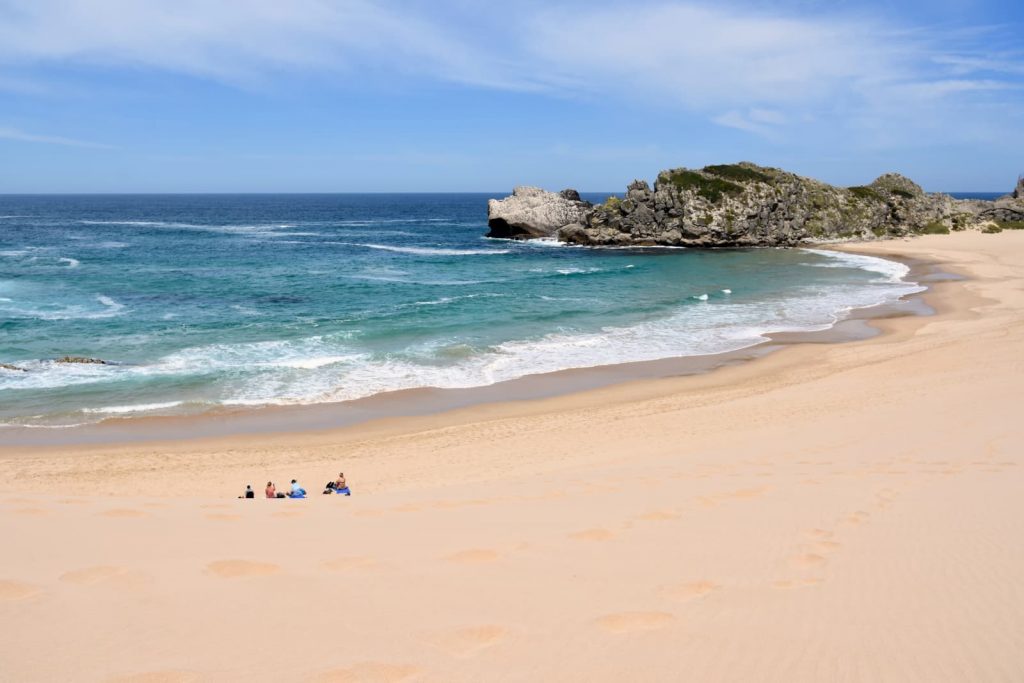
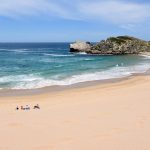
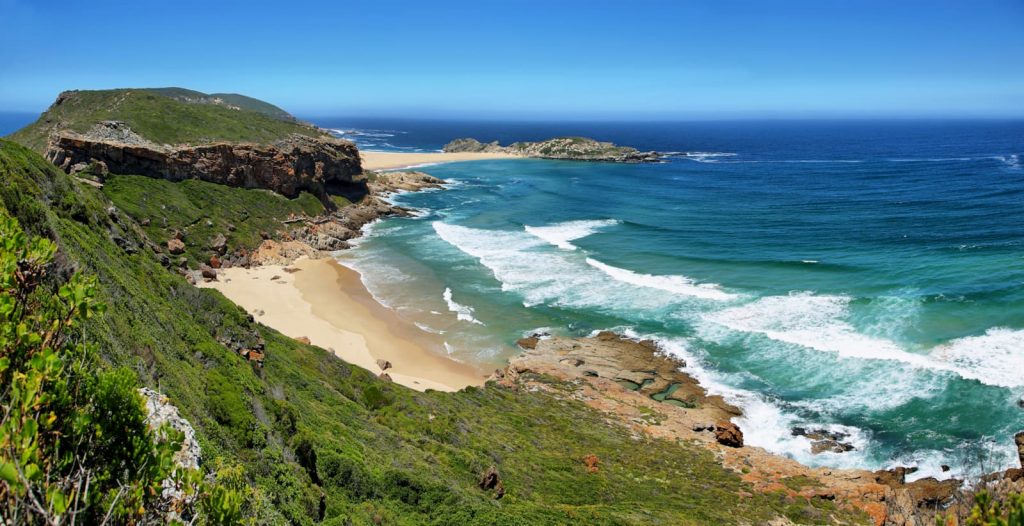
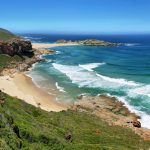
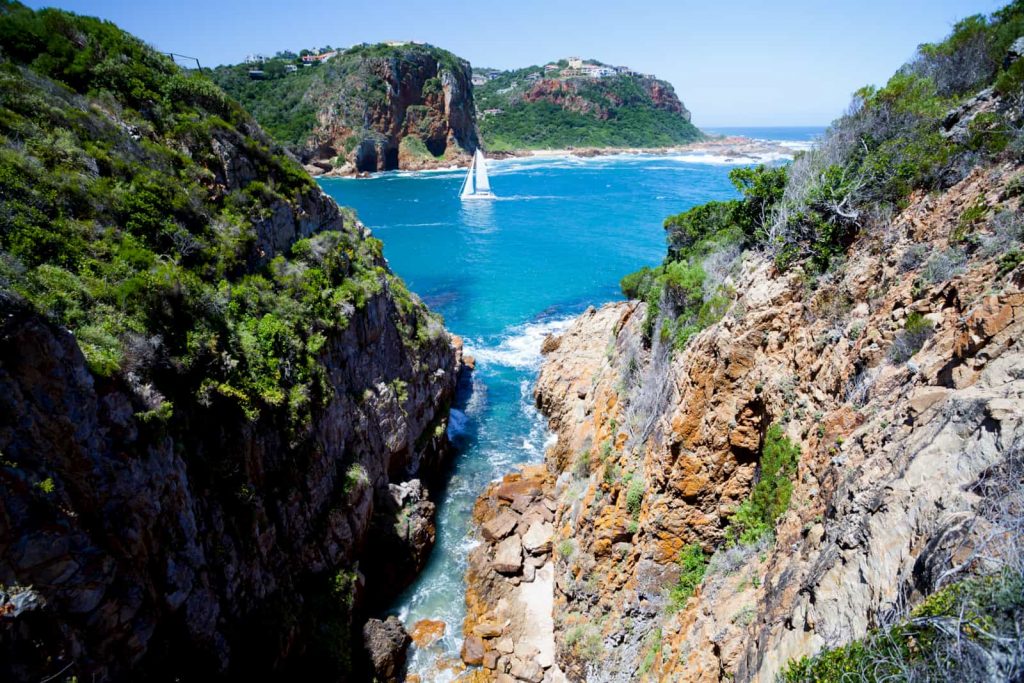
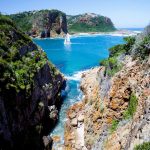
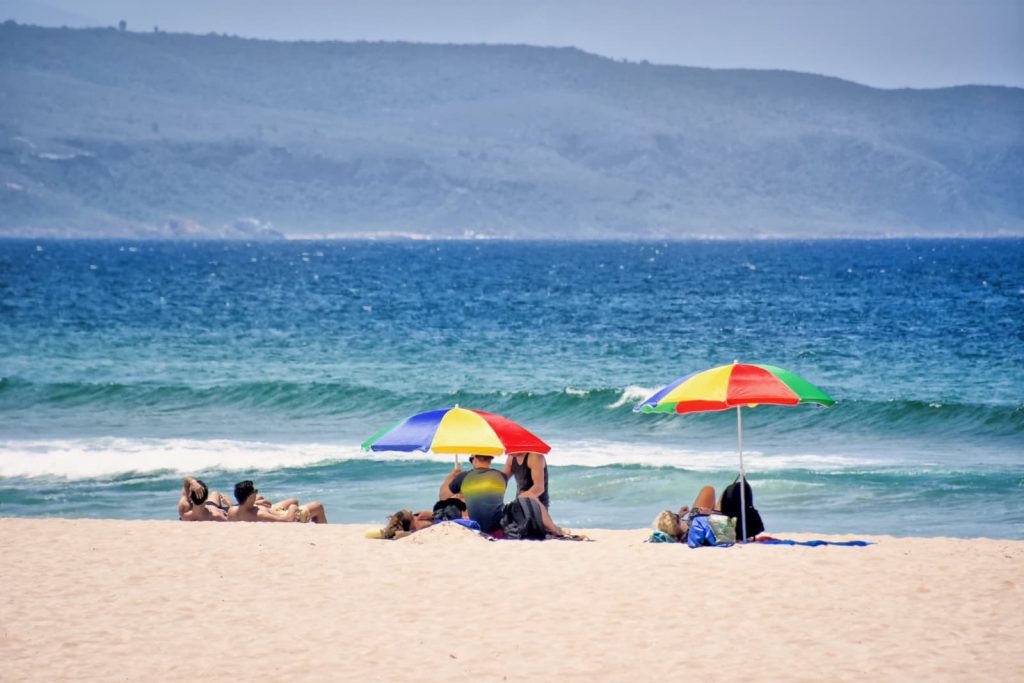
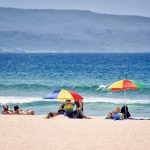
Between Plettenberg Bay & Knysna
On the road between Plettenberg Bay and Knysna, you’ll find a real gem called the Garden of Eden forest walk. This easy access spot, right off the main highway, is a gorgeous place to stroll through the lush forest on the short (1 km/.62 mi) wooden boardwalk. It’s a very easy walk and is wheelchair accessible. There are even benches and tables to sit at while you enjoy the greenery around you. There is a small fee to enter that goes toward maintaining the forest.
Also on the road between Plett and Knysna, there are little art and craft galleries that are fun to visit.
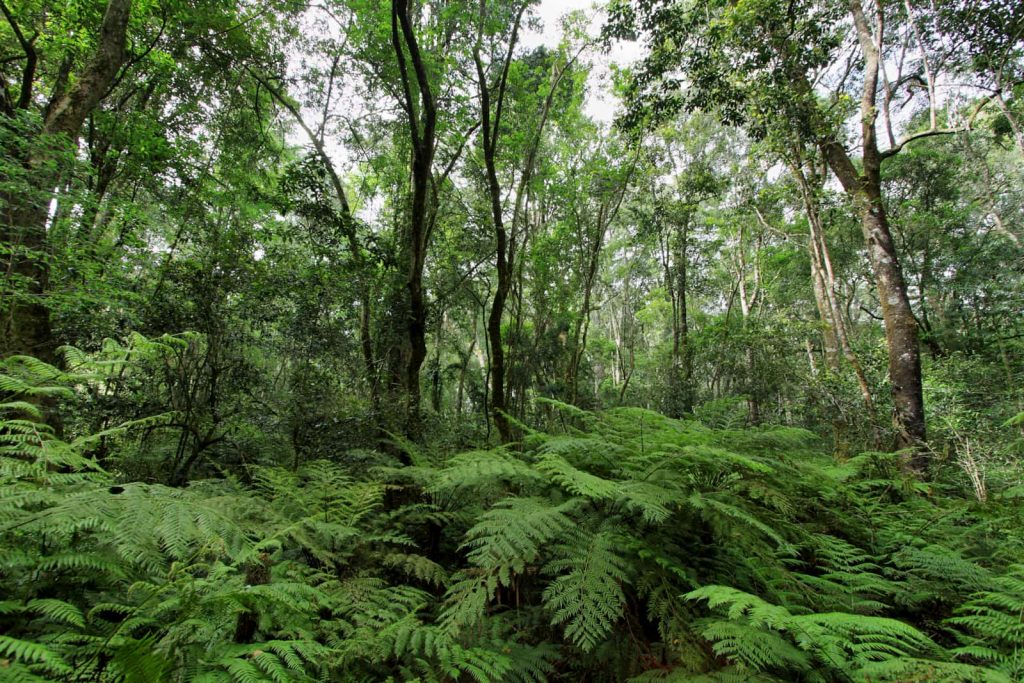
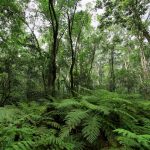

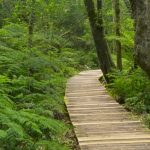
Knysna
Knysna (pronounced ny-znah) hails as one of the most popular towns on the Garden Route. It is home to a lively waterfront and beautiful gems of nature that are anxiously awaiting your thirst for exploration.
Step foot into the incredible world of the Knysna Forest (part of Garden Route National Park) where you will be met with creations of mother nature that will leave you breathless. You’re completely surrounded by mighty trees and mystifying greenery of all shapes and sizes, looking closely upon you as you trek through the forest. With each step, you’ll think that you’ve entered a world where faeries could fly out at any moment.
The Knysna lagoon is a natural beauty where you can enjoy a good time out on the water. The lagoon begins at the opening of two cliffs called “The Heads.” These cliffs have led to the demise of many ships in the past. In fact, you can see some of these shipwrecks on a local snorkeling or diving outing in the lagoon. Fishing, boating, canoeing, kayaking and stand-up paddle boarding (SUP) are just some of the other water sports to enjoy on the lagoon. If you haven’t had enough hiking after the trekking through the Knysna Forest, take a ferry ride to the Featherbed Nature Reserve (West Head) where you can walk the paths and take in the great views of the lagoon.
When you’ve had your fill of adventure, head down to the Knysna Waterfront which is full of different types of boutiques and shops for you to for you to patron until your heart’s delight. There are a variety of restaurants and cafes to dine at or have a relaxing sundowner. Knysna is known for their oysters, and there’s even a 10-day oyster festival in July. Bring on the feast!
In addition, there are nice beaches as well as golf courses in the area. There’s a lot to love about Knysna!
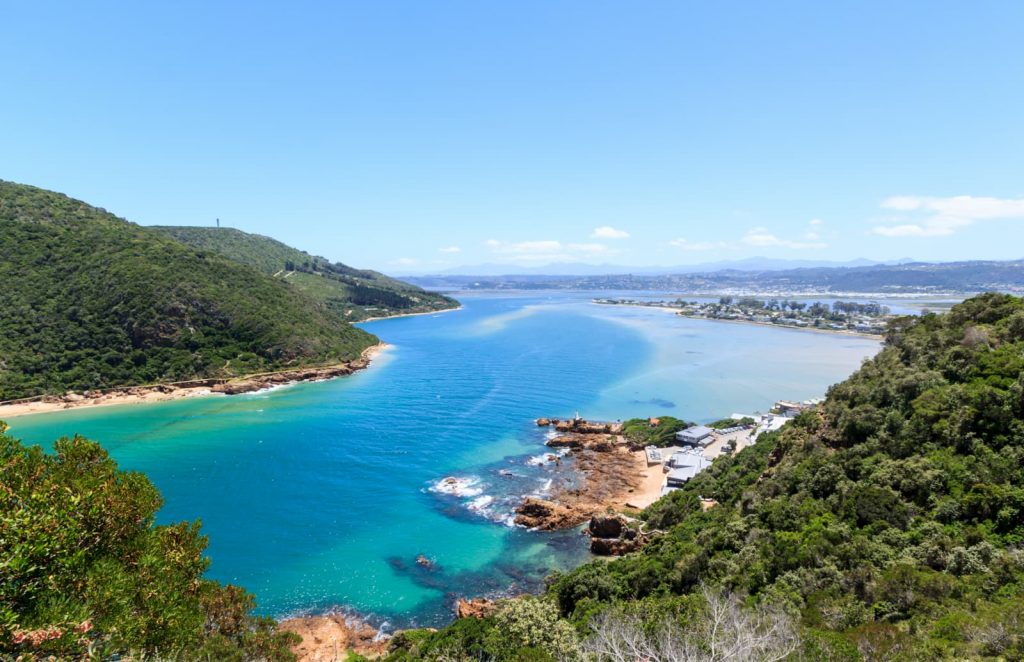
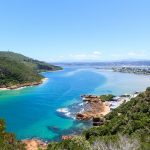
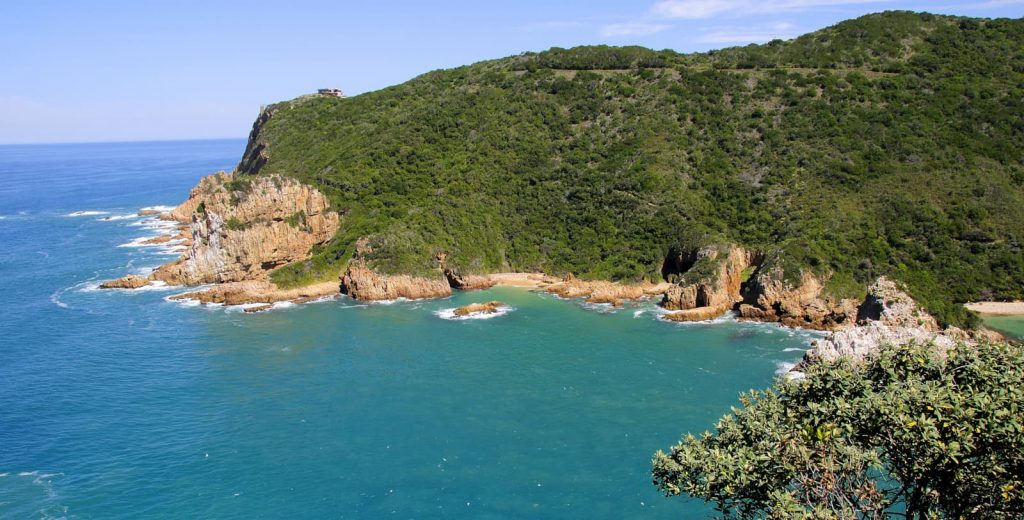
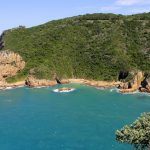
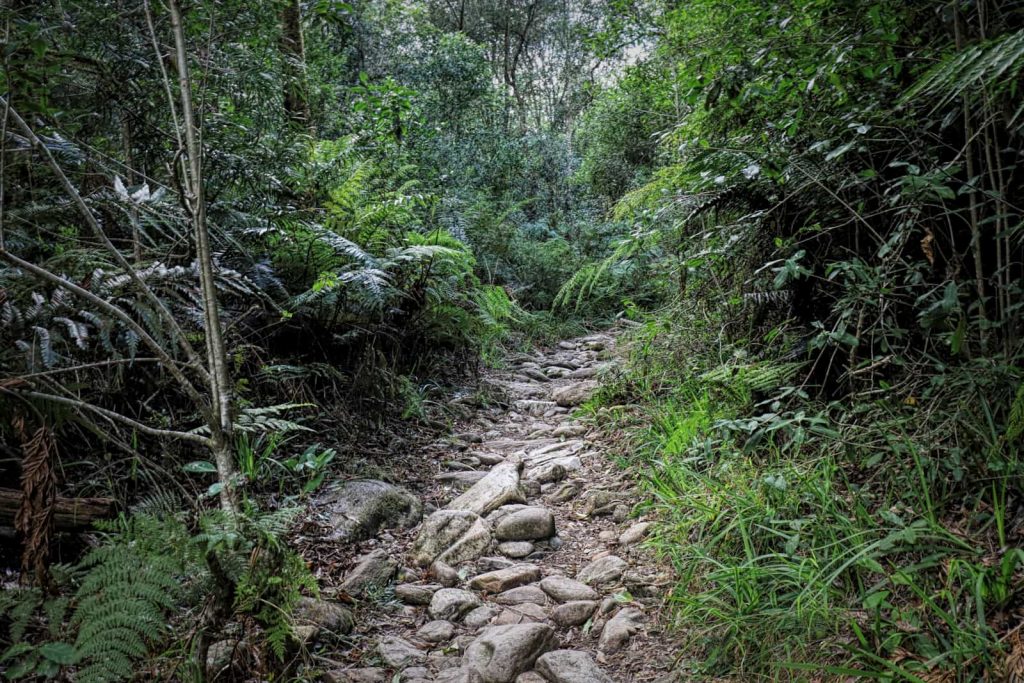
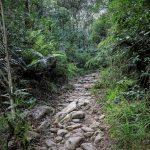
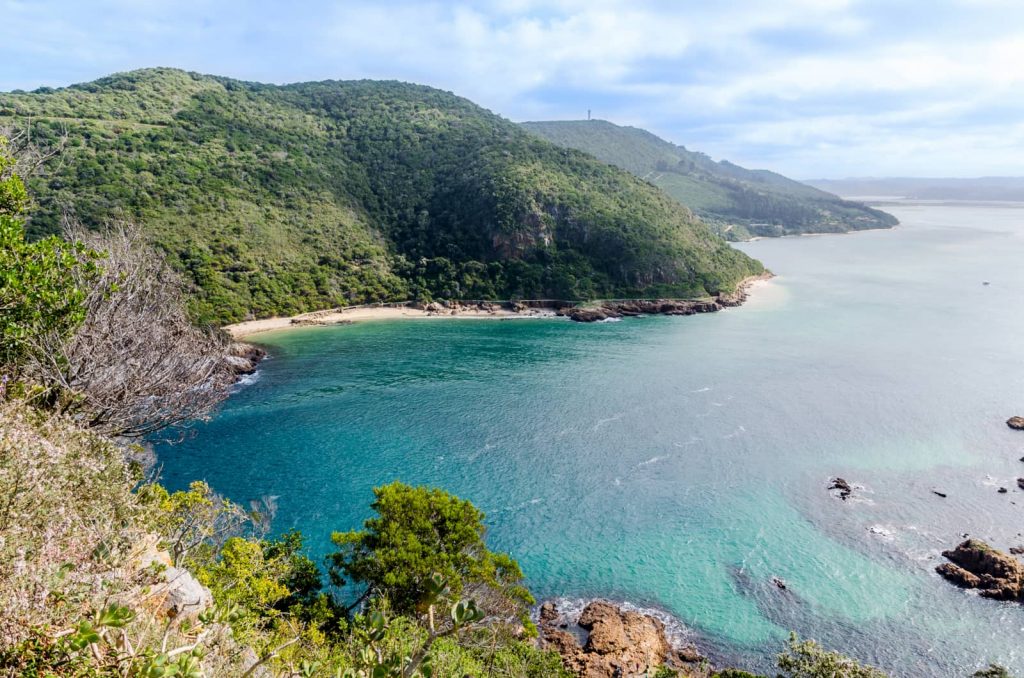
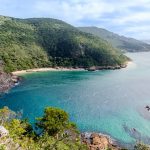
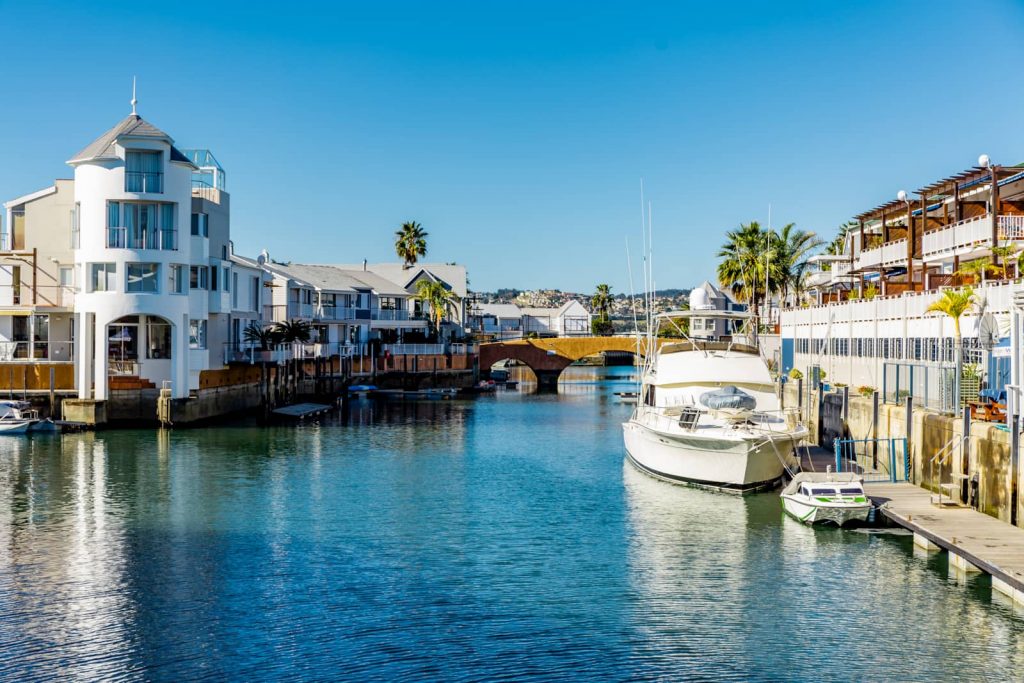
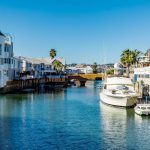
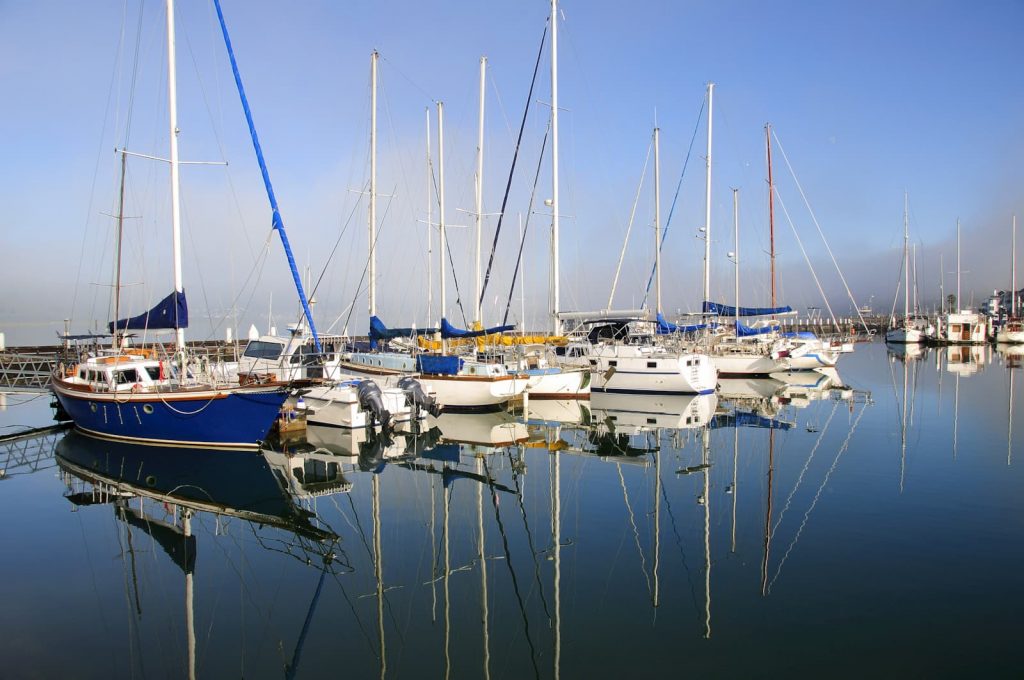
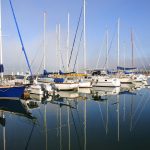
Wilderness
If you’re looking for tranquility on the Garden Route, make your way to the coastal town of Wilderness. Here, you’ll find a relaxed atmosphere with peaceful lakes and lagoons for you to simply enjoy nature. How about spending some time on the lake rowing a canoe, fishing or waterskiing? There’s also hiking and mountain biking in the area. Of course, Wilderness has its beaches too! Long stretches of sandy seafront to sit back on and watch the waves roll in. If you’re up for a little adventure, try a tandem paragliding or hang gliding flight. It’s not scary, I promise! I don’t do rollercoasters but I’ll do paragliding any day! Imagine the views you’ll have soaring above the beautiful landscapes, lagoons and oceanfront of Wilderness! This is your chance to be a bird! Speaking of great views, check out the Map of Africa view point, located at Wilderness Heights. You can get there by car and there’s no hiking involved. From this vantage point, you will be looking down on the Kaaimans River as it cuts through the forest, revealing the outline of the African continent. Pretty cool, huh?
The final section of Garden Route National Park is the Wilderness section. If you haven’t had enough hiking yet along the Garden Route, give it a go!
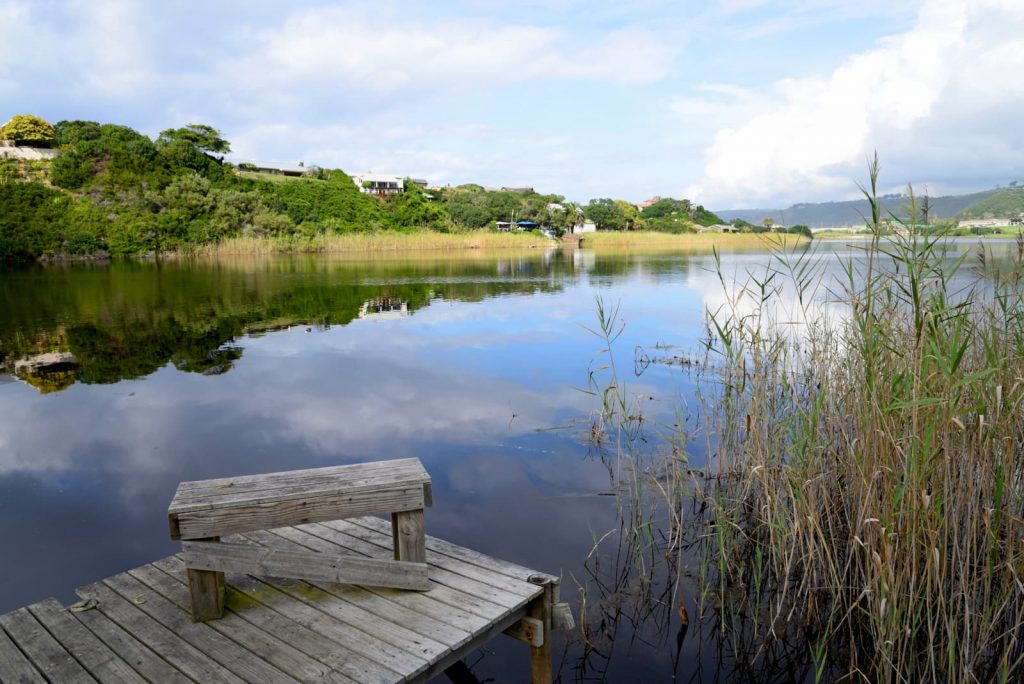
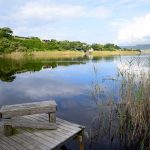
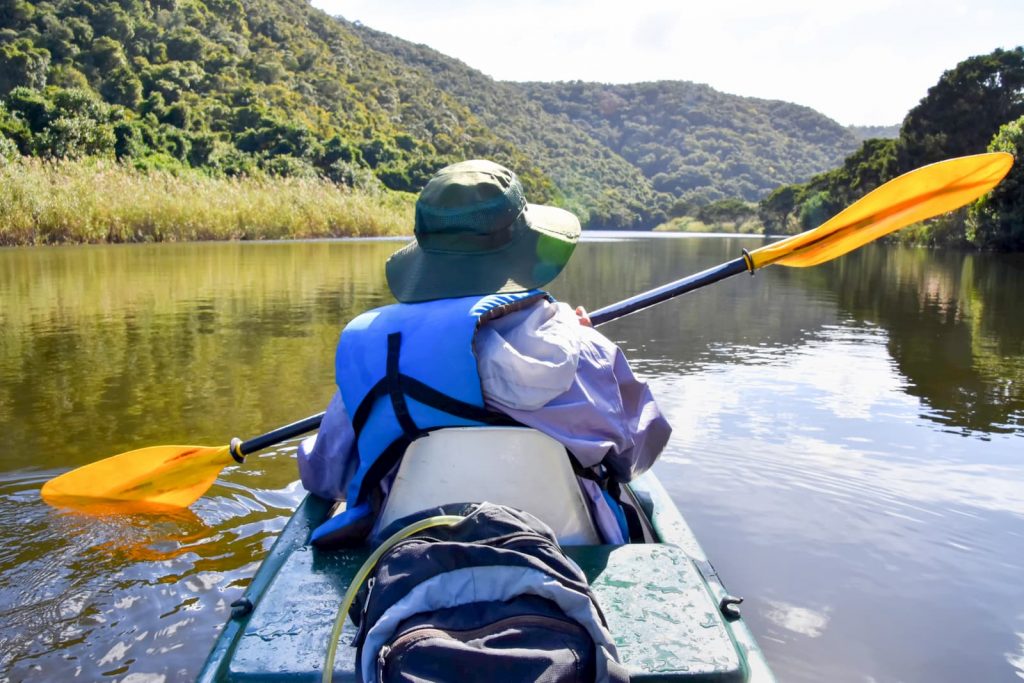
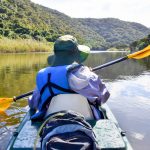
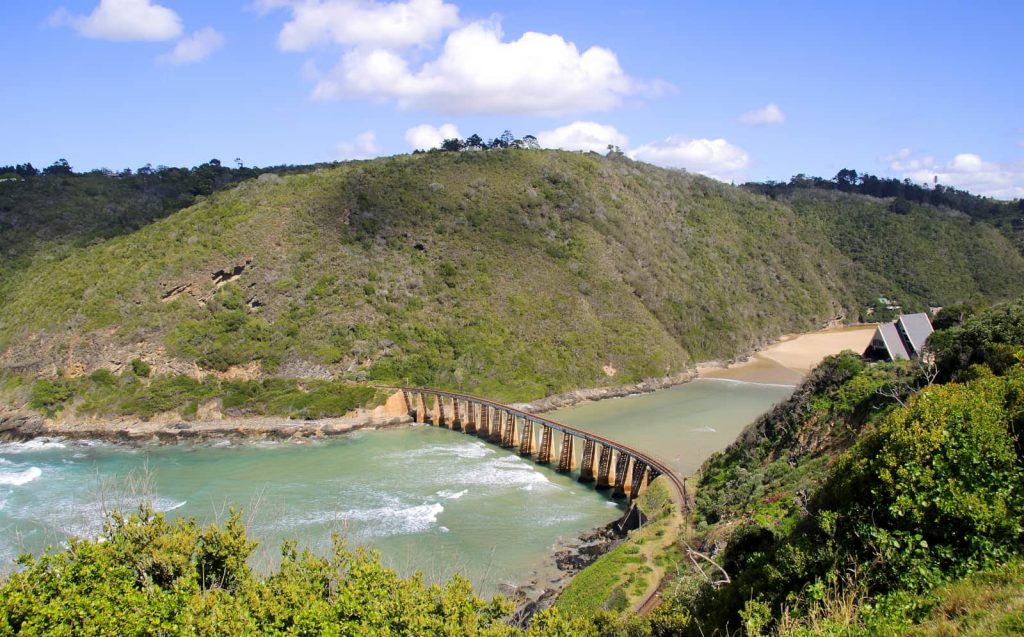
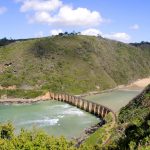
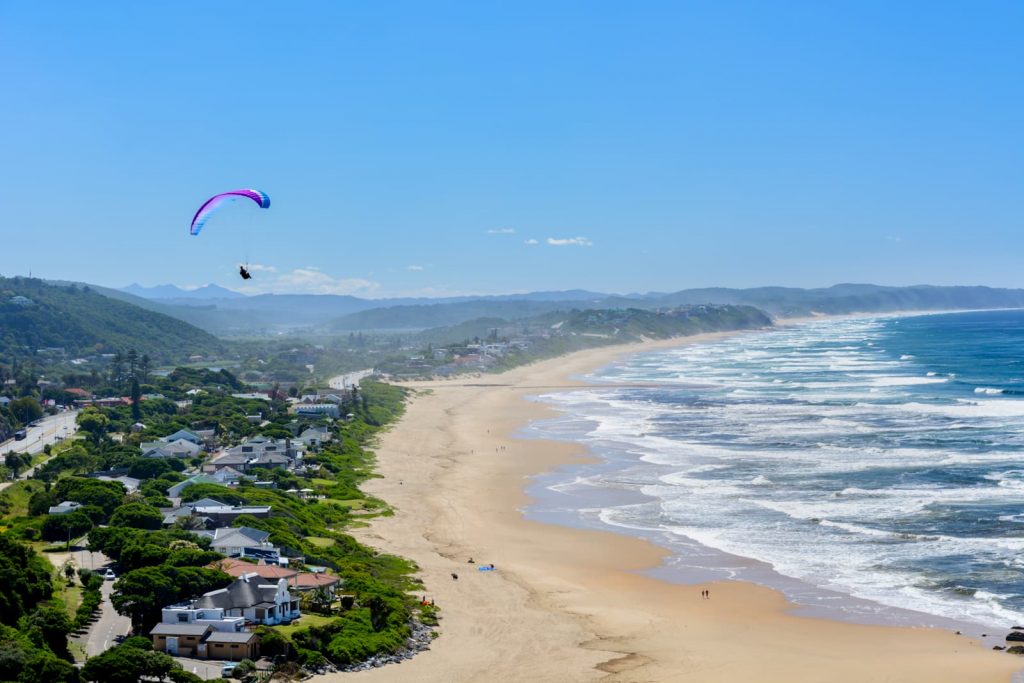
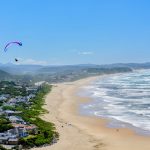
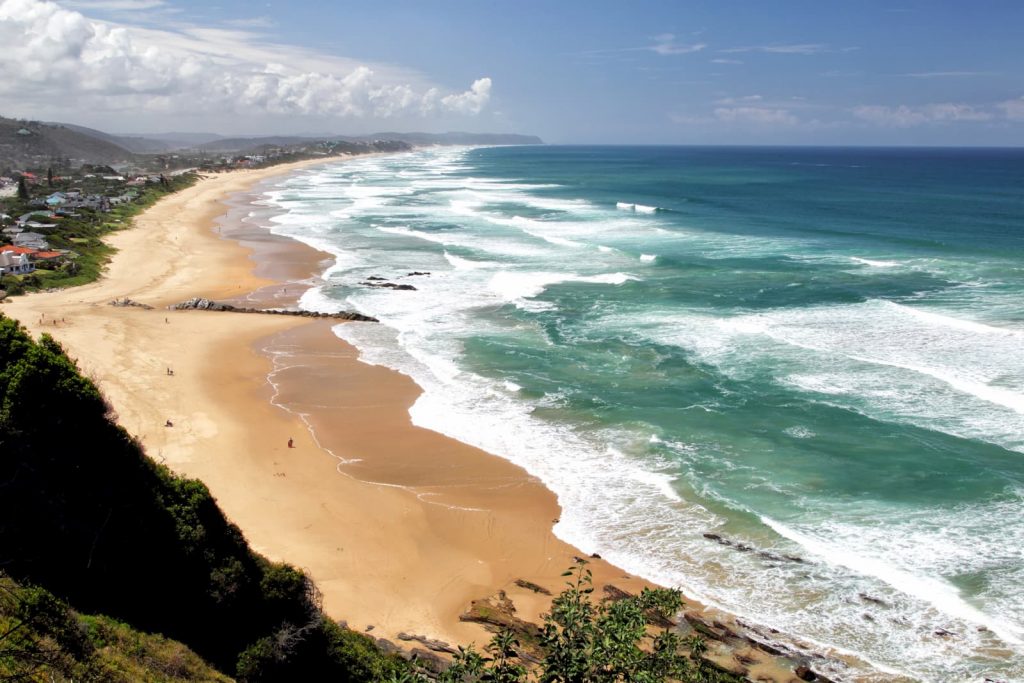
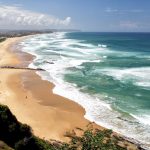
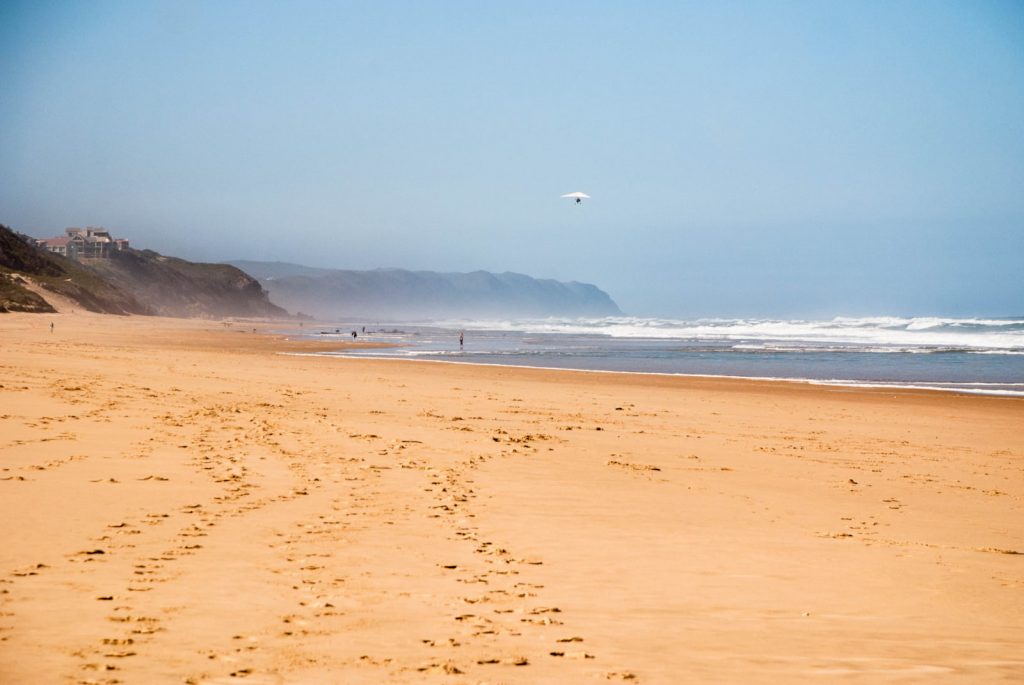
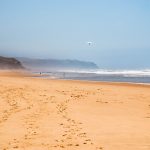
Mossel Bay
You’ve made it to Mossel Bay, the end point of the Garden Route! How about wrapping up your journey with some historical sites and wild adventure?
Mossel Bay is where the first European explorer to step foot in South Africa, Bartolomeu Dias, came ashore in 1488. The Dias museum complex, which is named for him, is home to the 500 year-old Post Office Tree, yes, tree, (South Africa’s first post office where mail is still posted), a maritime museum that houses a replica of Dias’ caravel (sailing vessel), a shell museum and more.
Once you’ve had your historical fix, head over to the Cape St. Blaize lighthouse. Here, you can climb to the top (April-October*subject to change) for views of the Indian Ocean, but make sure you check out the cave underneath the lighthouse for a really cool view of the blue sea! Also, starting at the cave is the Oystercatcher Trail, a splendid 4-day hike along the coast. Guided treks are offered.
Like most of the towns in the Garden Route, Mossel Bay has its share of long beaches that are great for swimming, surfing, snorkeling and scuba diving, but it also has something that most of the other Garden Route towns don’t – Great White Shark cage diving near the 2,500-member seal colony at the seal island, just off shore.
One other thing to note is that with its long history of being a fishing town, Mossel Bay is known for their mussels and oysters so have a try!
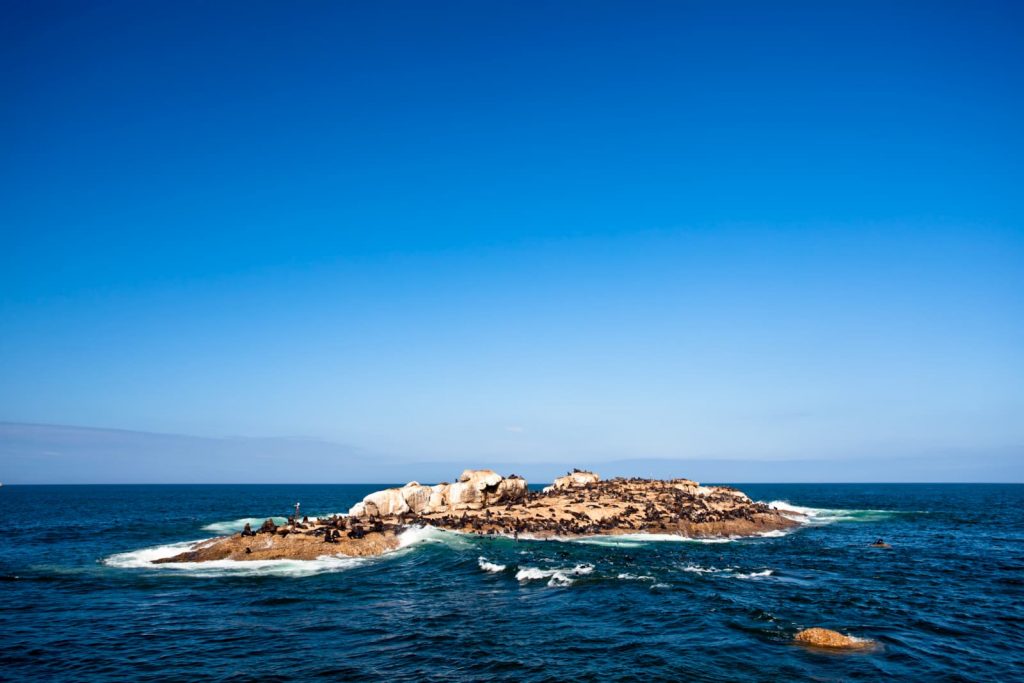
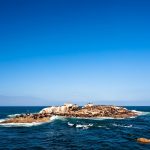
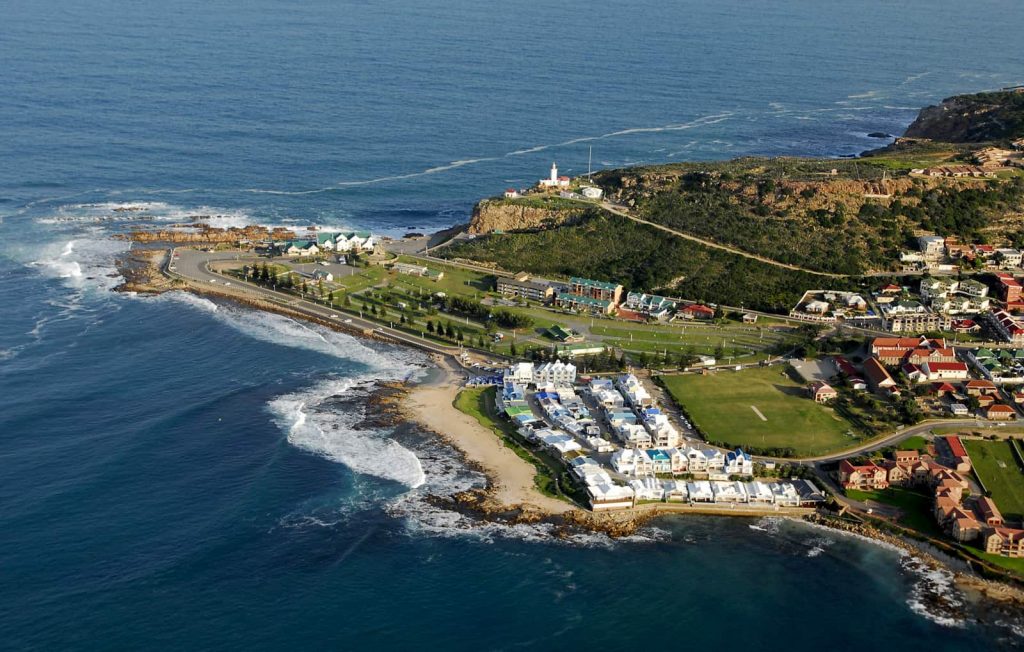
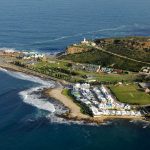
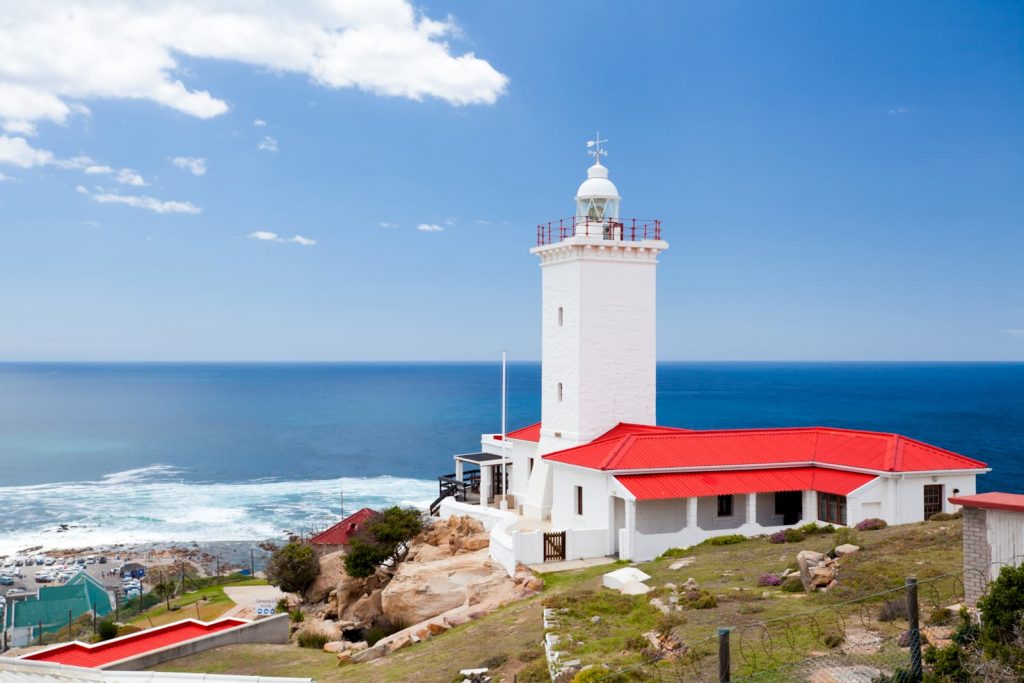
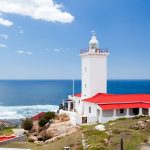
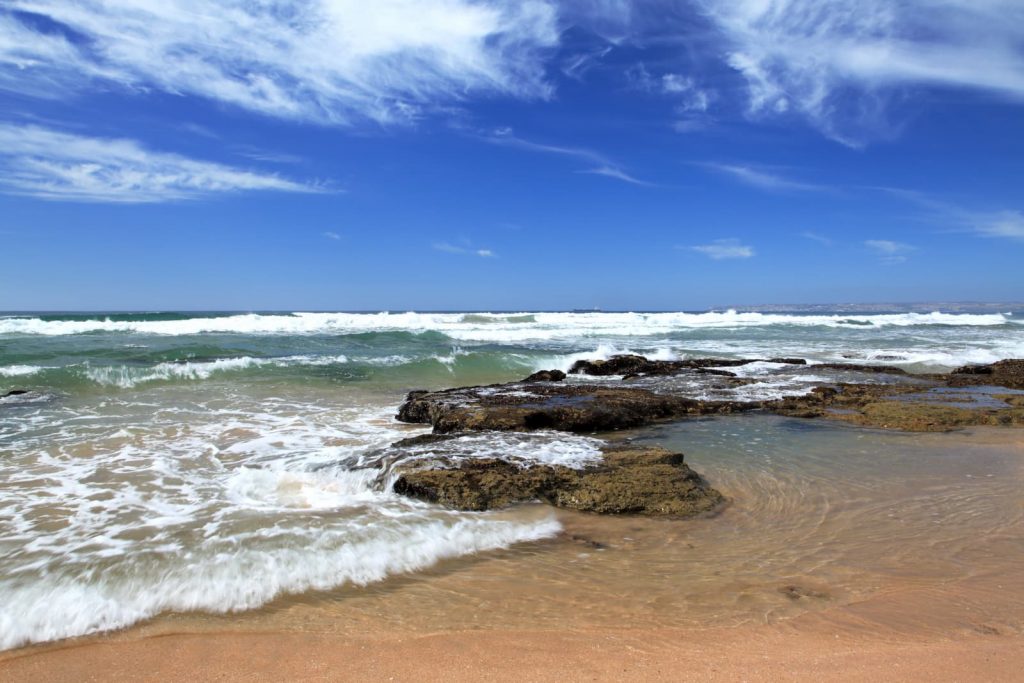
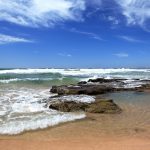
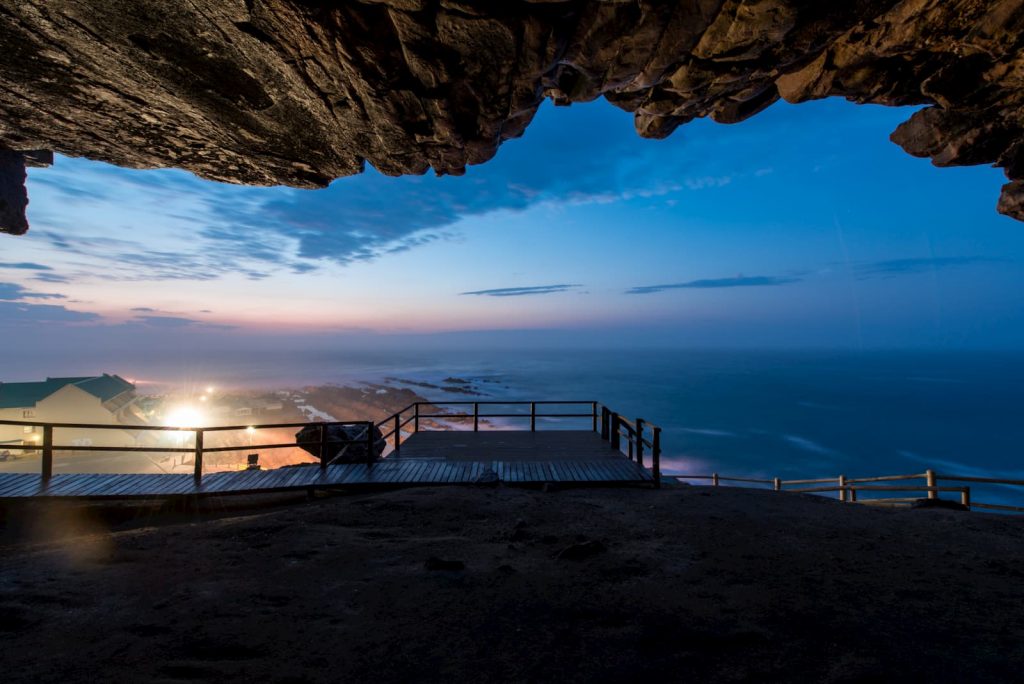
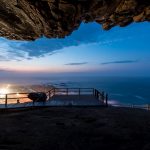
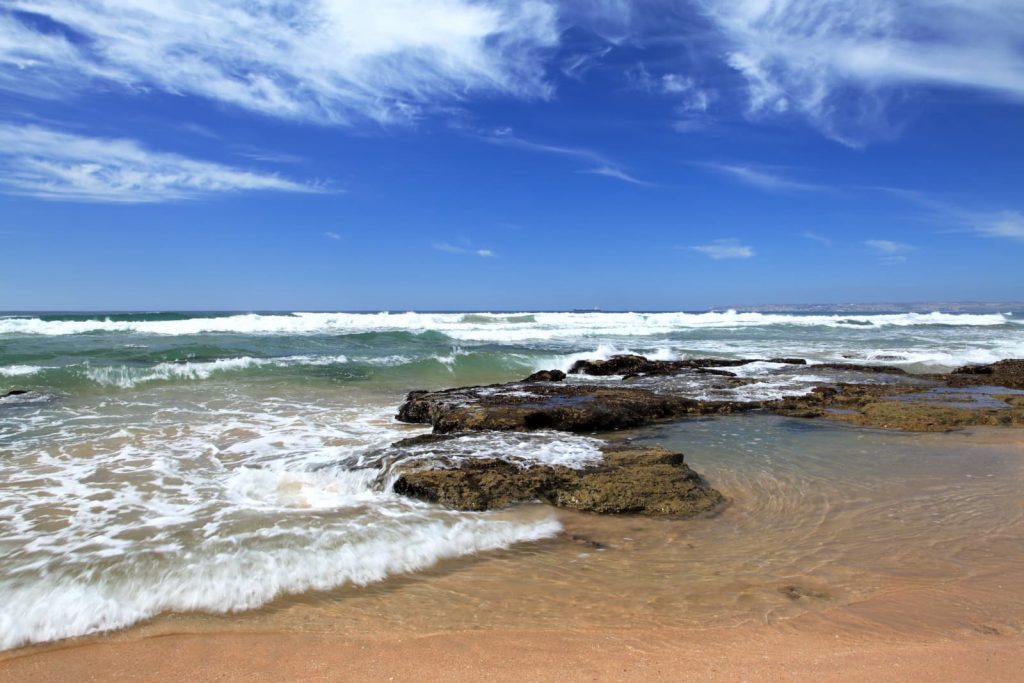
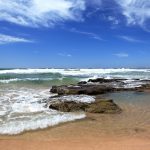
Garden Route Drive Times (listed East to West)
- Jeffreys Bay to Tsitsikamma – 1 hr 20 min
- Tsitsikamma to Bloukrans Bridge – 25 min
- Tsitsikamma to Plettenberg Bay – 1 hr
- Plettenberg Bay to Knysna – 30 min
- Knysna to Wilderness – 35 min
- Wilderness to Mossel Bay – 45 min
The Whale Route
But, wait! There’s more! The Whale Route is another fantastic drive along the southern coast that is not to be missed, especially if you love marine life. If you come at the right time of year, you can also gasp aloud as whales breach out of the water and crash back down, sending white water flying in every direction. Remember how you used to love splashing around in the pool or ocean as a kid? Bet youwish you could have done it like these whales! Every year Southern Right whales and Humpback whales migrate through the waters off the southern coast of South Africa, putting on fantastic displays of courtship and also give birth to calves. Bryde’s whales stay in South African waters year-round, and dolphins, seals and penguins are also seen here. There’s plenty of ground, or should I say sea, to cover along the Whale Route so there should be no shortage of sighting opportunities during peak season. Come see the show for yourself!
When to Go
July – November is peak whale watching season in South Africa.
Now, we’ll continue our journey from East to West along the Whale Route towards Cape Town (but you can certainly take the trip in reverse order):
De Hoop Nature Reserve
Wow! I wasn’t expecting this oasis amidst the already well-known beauty of the Whale/Garden Route. Close your eyes, and imagine standing among sloping sand dunes, a refreshing breeze whisking across your face just as a whale breaches off shore. Sounds like a pretty special place, doesn’t it? Oh, there’s more! 34,000 hectares (84,000 acres) to be exact of stunning, diverse habitats including rocky coastline, wetlands and plains that form a sanctuary that is so important for many vulnerable species. The reserve is a refuge for the endangered Cape mountain zebra and bontebok. Other wildlife that calls this place home includes eland, yellow mongoose, baboon, caracal, Cape fox, the occasional leopard and over 250 bird species. The De Hoop Nature Reserve extends 5 km into the sea and serves as protection for Southern Right Whales and their breeding ground. There are plenty of places along the coast to watch for whales, hike and snorkel in rock pools. If you’ve got the stamina, the Whale Trail is a 55 km coastal hike that takes 5 days to complete and has some spectacular scenery and plenty of whale activity to keep you company (July-November).
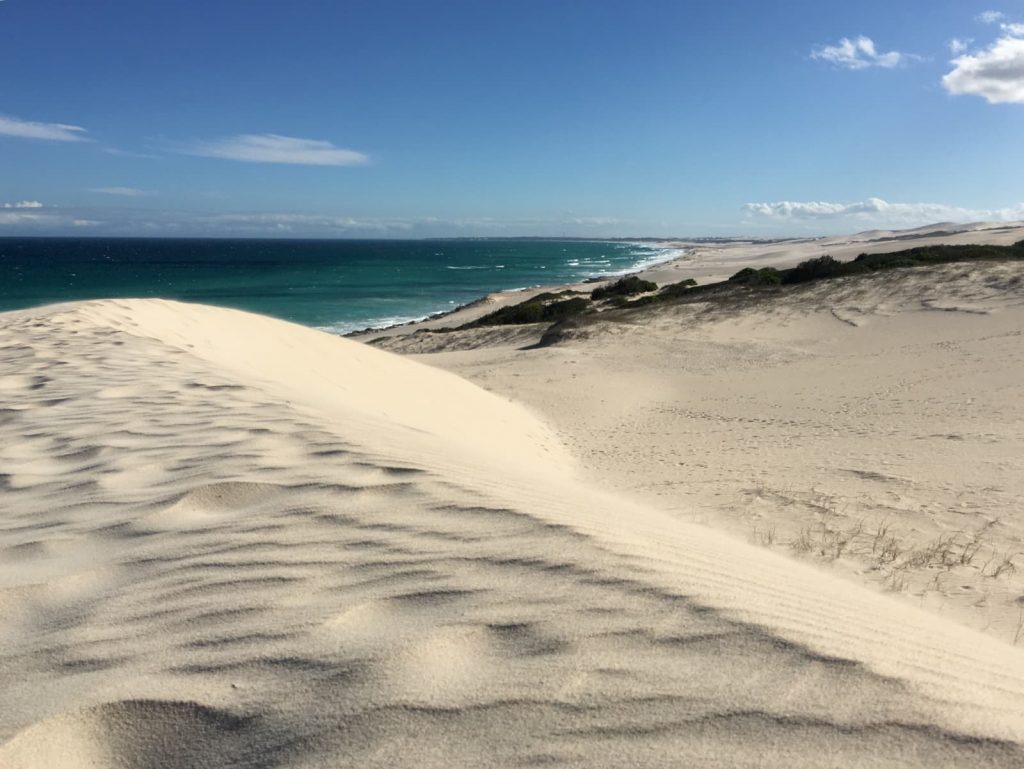
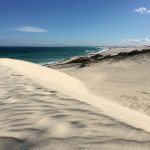
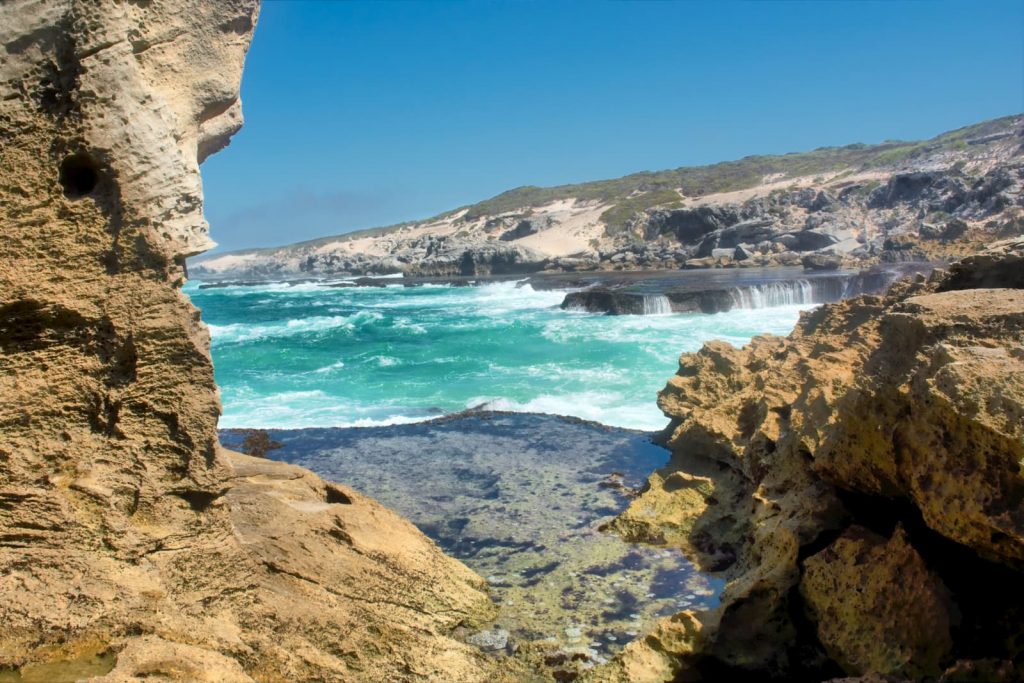
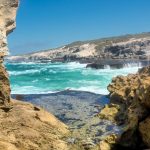
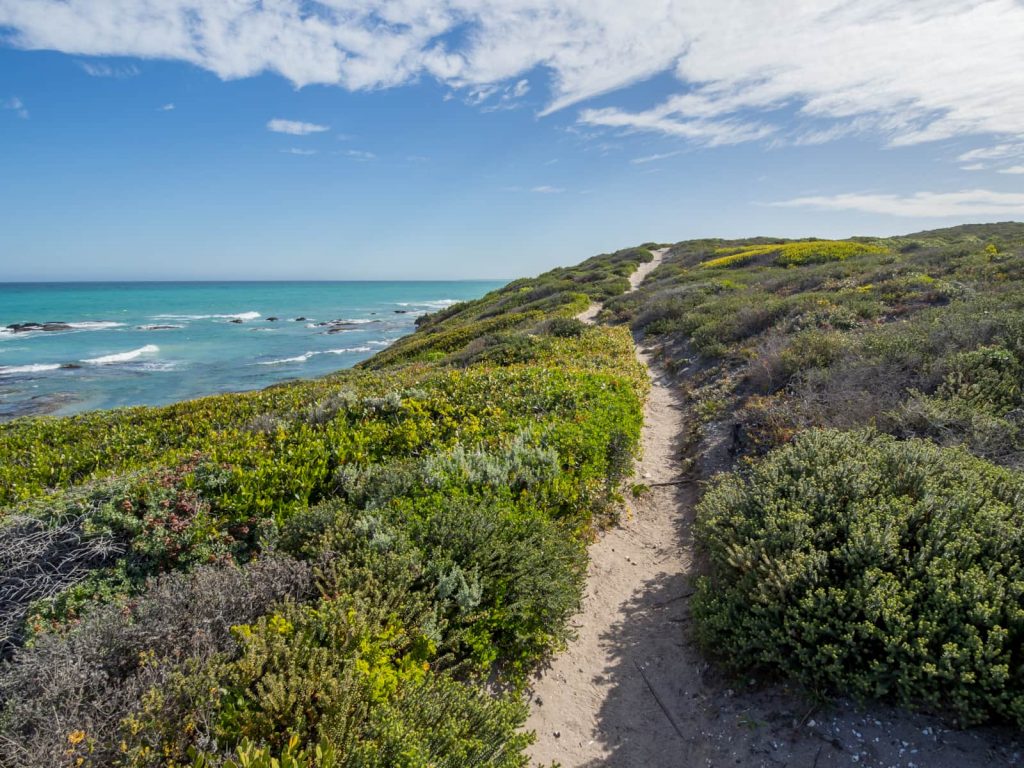
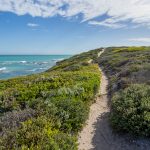
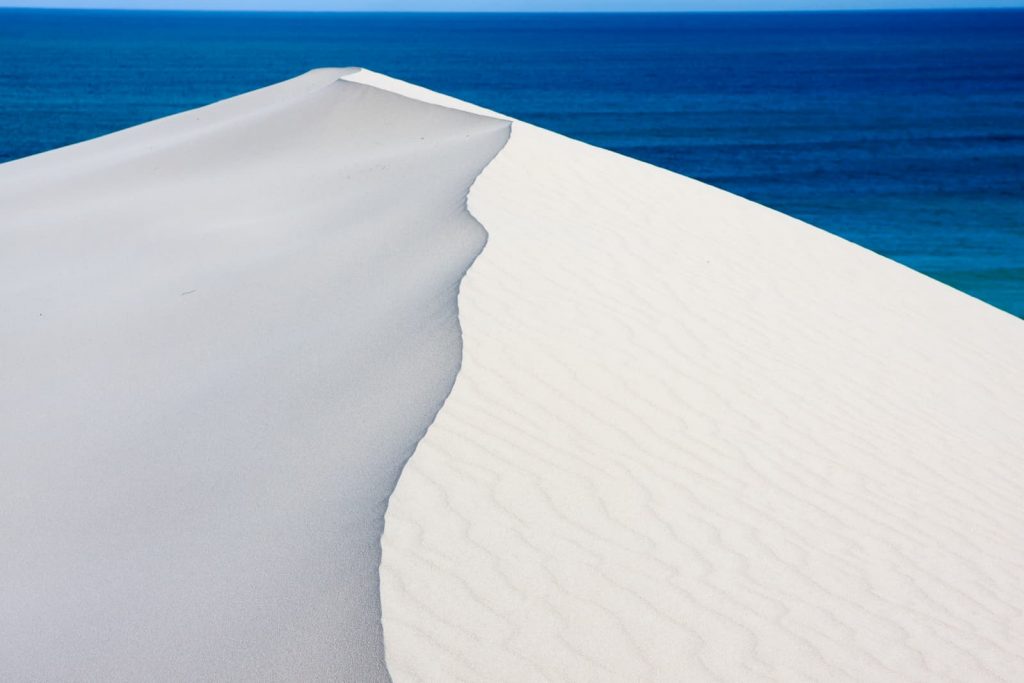
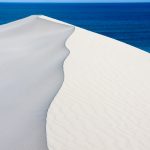
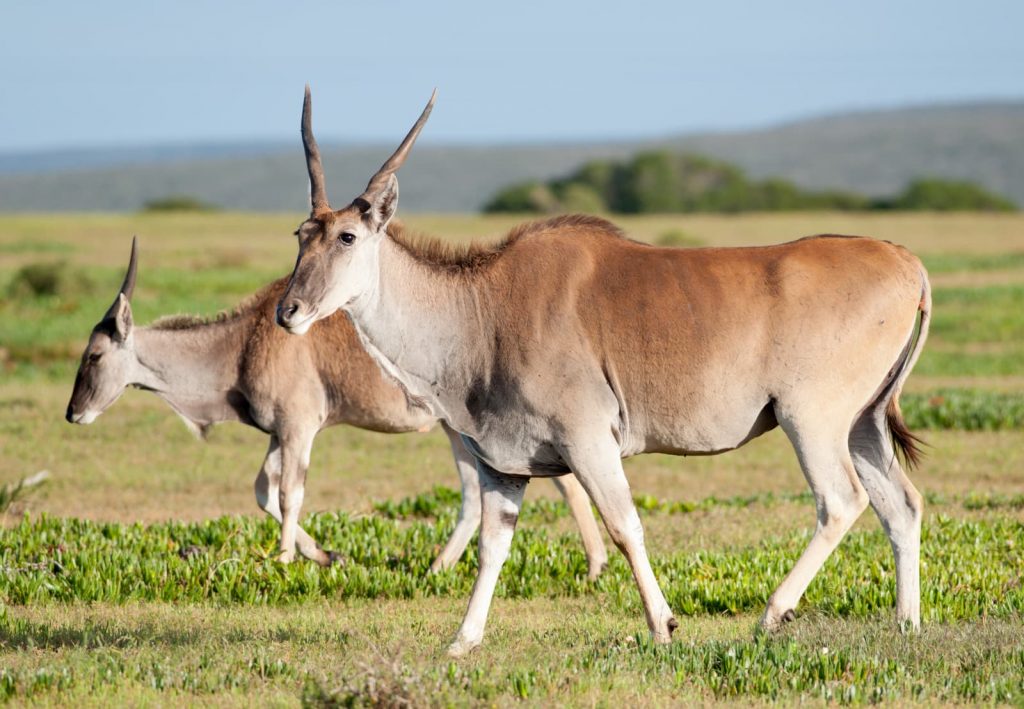
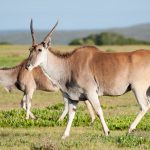
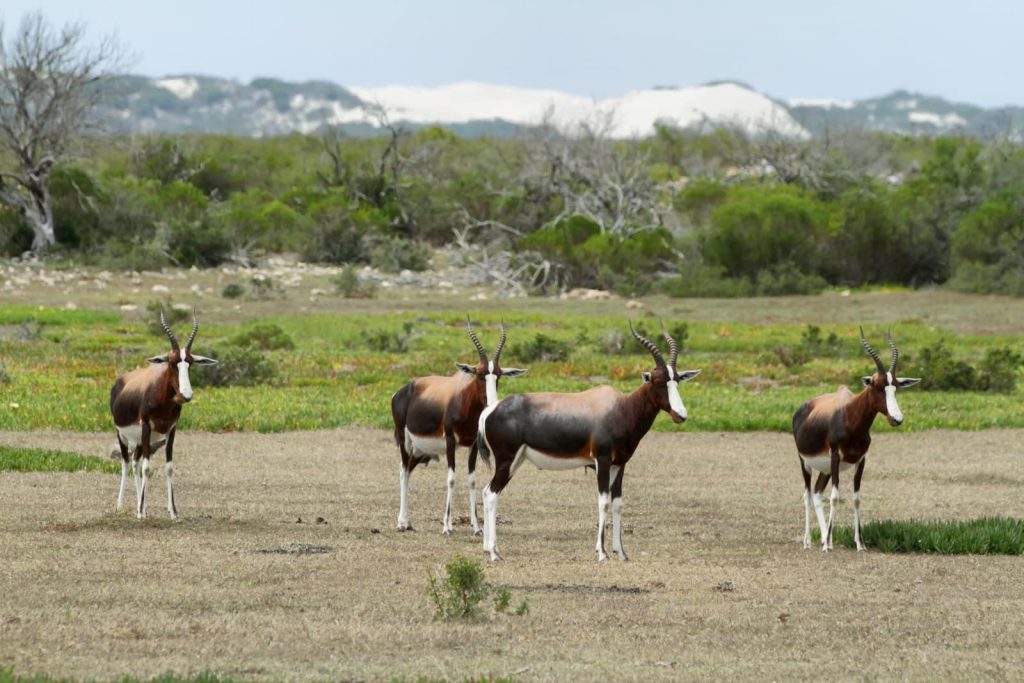
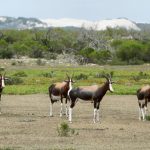
Gansbaai
There’s another creature of the sea that can be found along the Whale Route, but it has much more impressive jaws (hint hint). Yes, I’m talking about the imposing Great White Shark, and Gansbaai is known as the shark cage diving capital of the world.
There are two islands off the coast that draw the Great Whites. Dyer Island is where African penguins, cormorants, Cape gannets and other seabirds congregate to breed. Geyser Island is home to 60,000 Cape fur seals – that’s some pretty tight living quarters! The waterway that flows between these twoislands is known as Shark Alley, where Great Whites lurk, waiting for an opportunity to catch their dinner.
Cage diving is your chance to come face to face with these legends and see that they are not the monsters that Hollywood has portrayed, but rather magnificent animals that deserve our admiration and respect, not fear.
Also in Gansbaai, Southern Right Whales can be seen in the bay where they come to mate and give birth to young, so look out for them during whale season from July to November.
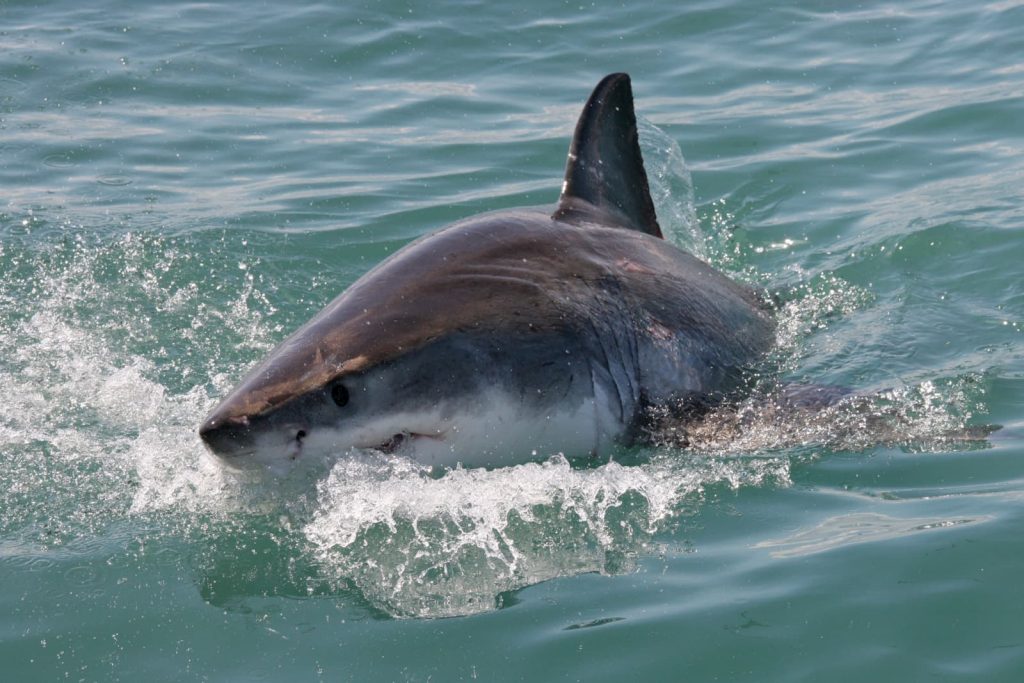
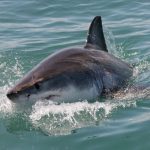
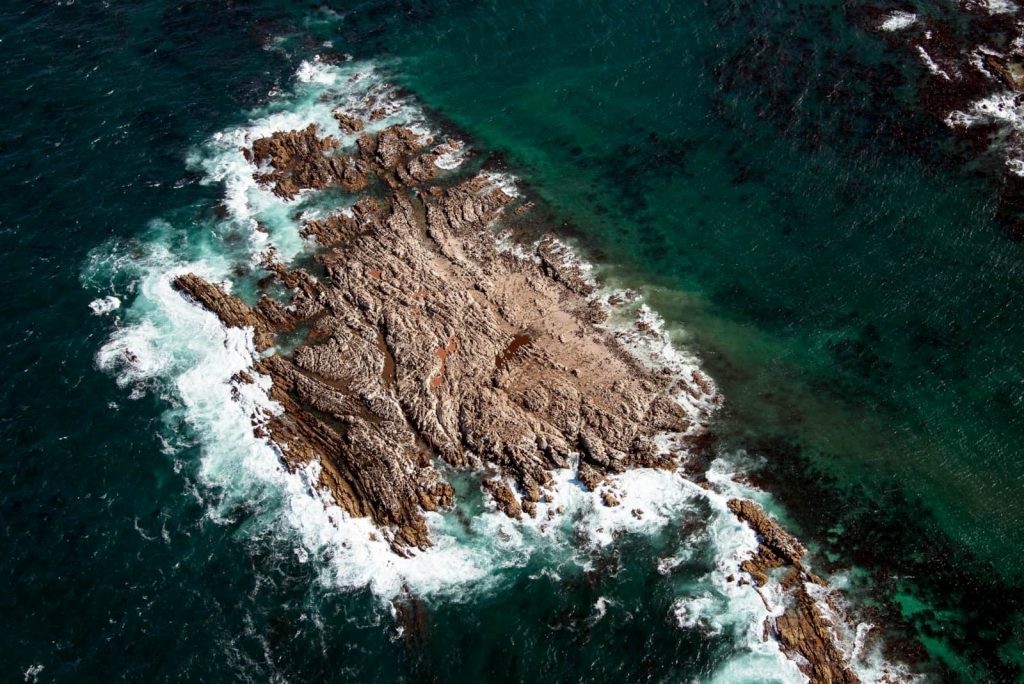
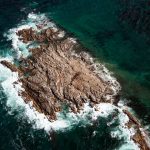
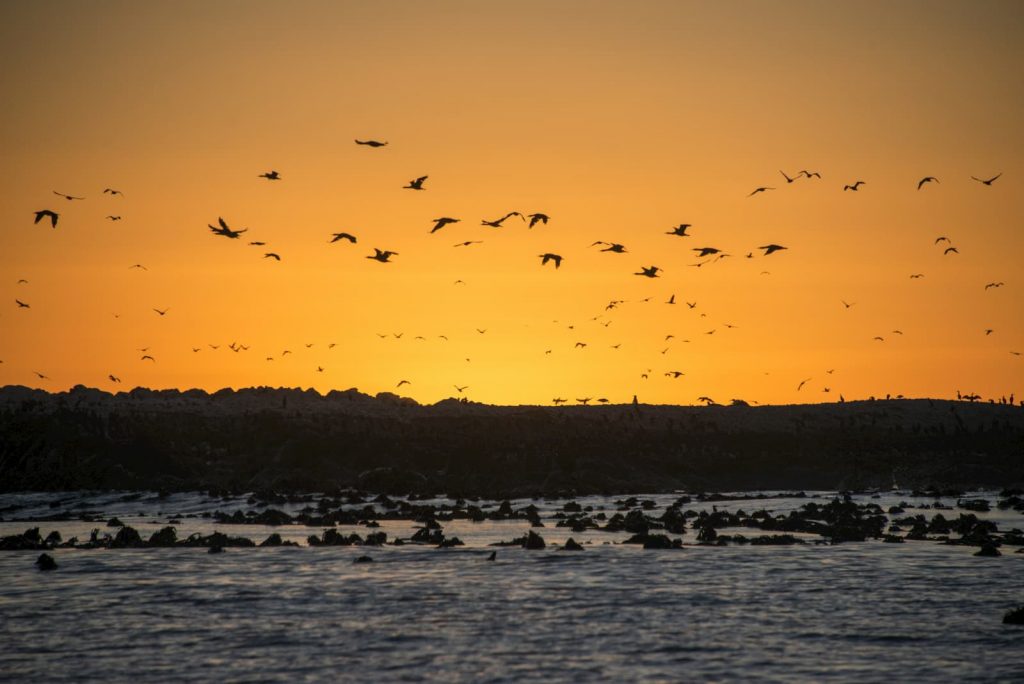
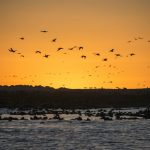
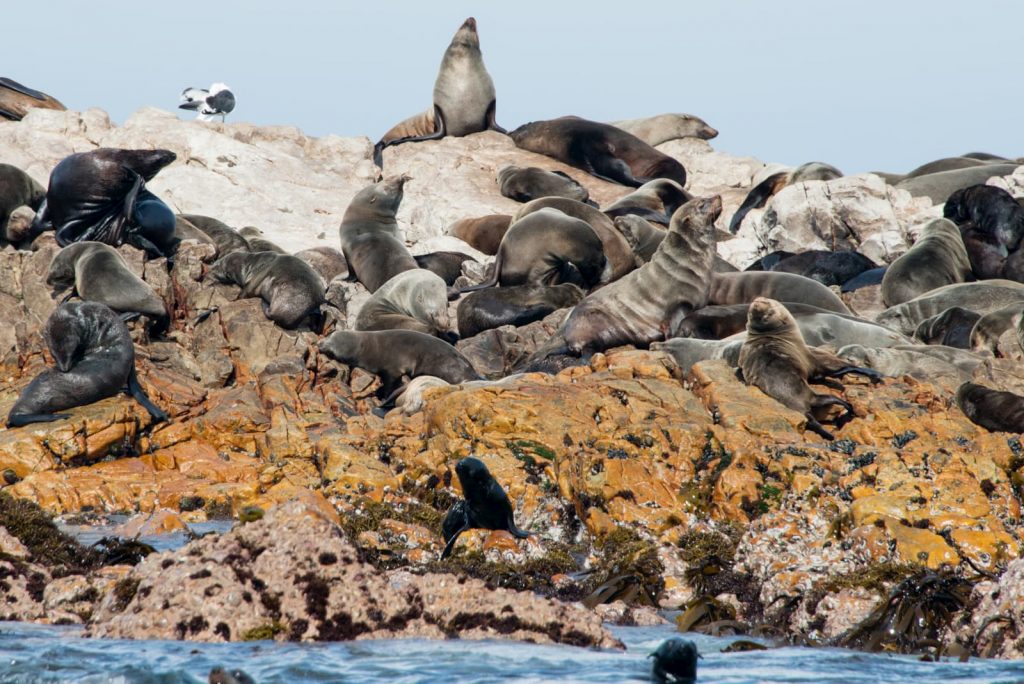
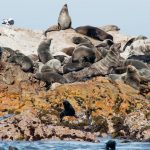
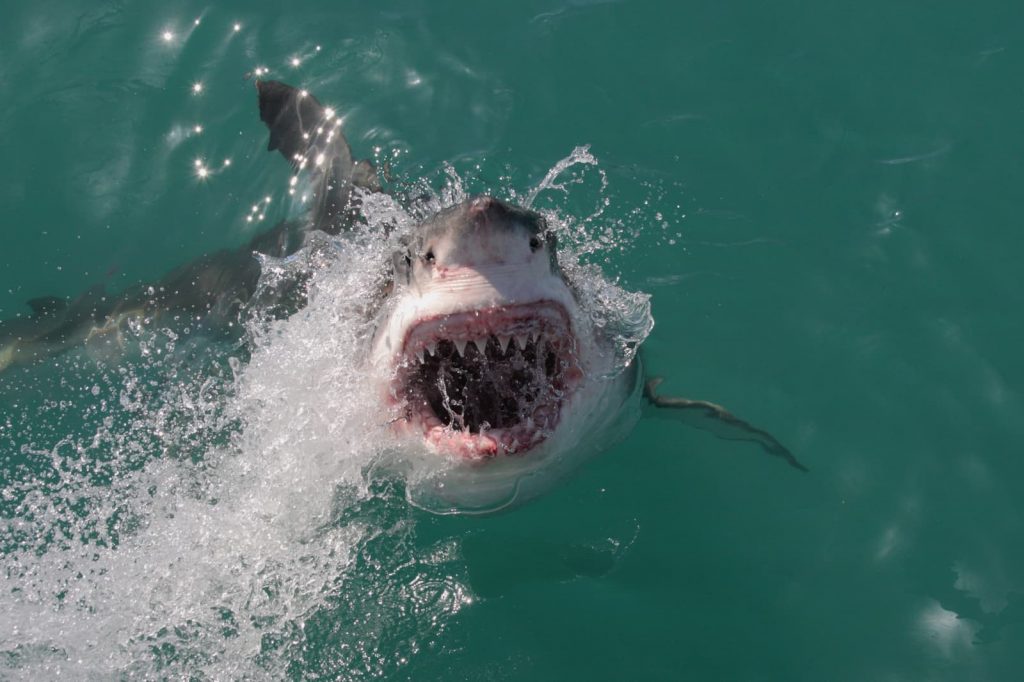

De Kelders
Go underground – literally!
Just 3 minutes by car from Gansbaai and 25 minutes from Hermanus is De Kelders, which is known for its underground limestone cave system, beneath the seaside cliffs of Walker Bay. De Kelders means “the cellars” in Afrikaans, and here you can journey by foot into the hidden, subterranean caves of all shapes and sizes, featuring stalactites and stalagmites and cool pools that you can take a dip in. The most well-known cave in the area is Klipgat Cave, located in the Walker Bay Nature Reserve, just outside of De Kelders, and the views from here are like windows to the ocean. The cave has historical significance too as human remains and artifacts dating back to 65,000 to 85,000 years ago were found here, making this an authentic caveman dwelling.
Don’t forget about the whales! De Kelders is one of the best places to spot them from land.
Notes:
- The Klipgat walking trail starts in Gansbaai and ends at the Klipgat cave in the Walker Bay Nature Reserve
- Local companies offer cave tours
Hermanus
Hermanus is arguably the best place in the world to whale watch from land. It is located on Walker Bay, about an hour and a half drive east of Cape Town. Here, Southern Right whales are the dominant species in these waters and make quite a splash with their performance, but also look out for humpback, Bryde’s, minke and killer whales (orcas) as they can also make an appearance. So perch yourself anywhere along the coastline for this acrobatic spectacle. For a great vantage point, take a hike atop the Cliff Path (12 km/7.5 mi) along the coast for an elevated view of the gentle giants of the blue. There are benches along the path for you to sit back and gaze across the aquatic stage.
The best time to visit Hermanus is during the peak of its whale season, July through November. Hermanus also hosts a whale festival in September.
Tip
- Listen for the sound of the whale crier's horn (made of kelp), which will alert you to whales off shore (during whale season).
Other things to do in Hermanus:
- Whale House Museum (admission included in the ticket for the Old Harbour Museum and the Photographic Museum)
- Old Harbour Museum
- Flick's Pool (rock tidal pool)
- Craft market located in Lemm's Square (Sundays)
- Art Amble (unique art galleries, some featuring resident artists – always a fun visit)
- Nearby wine tasting
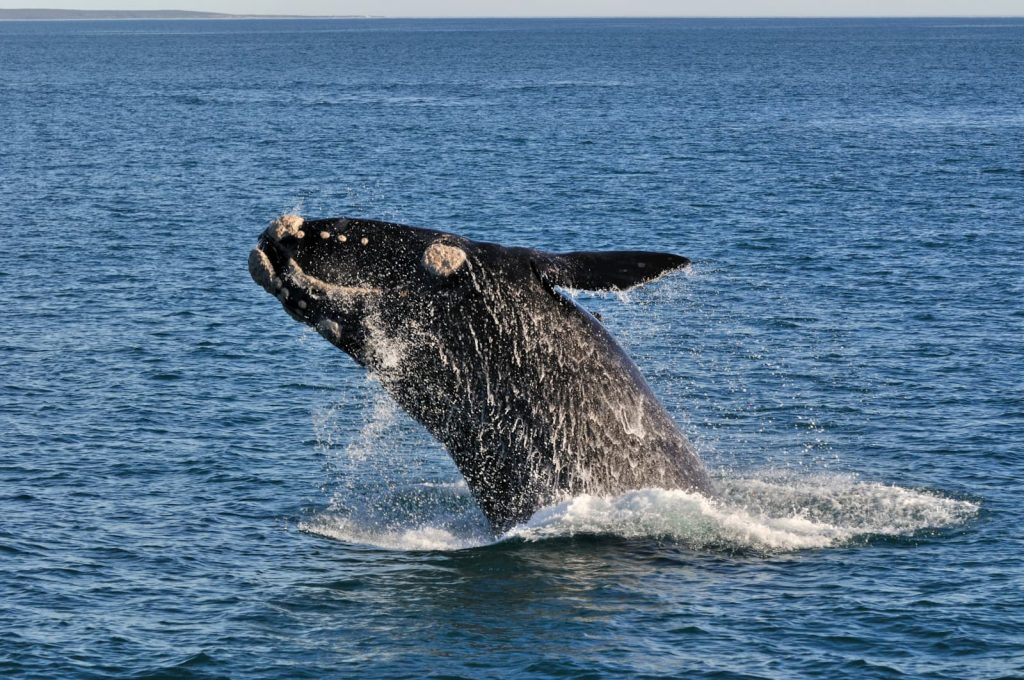
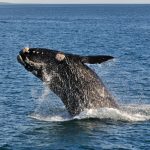
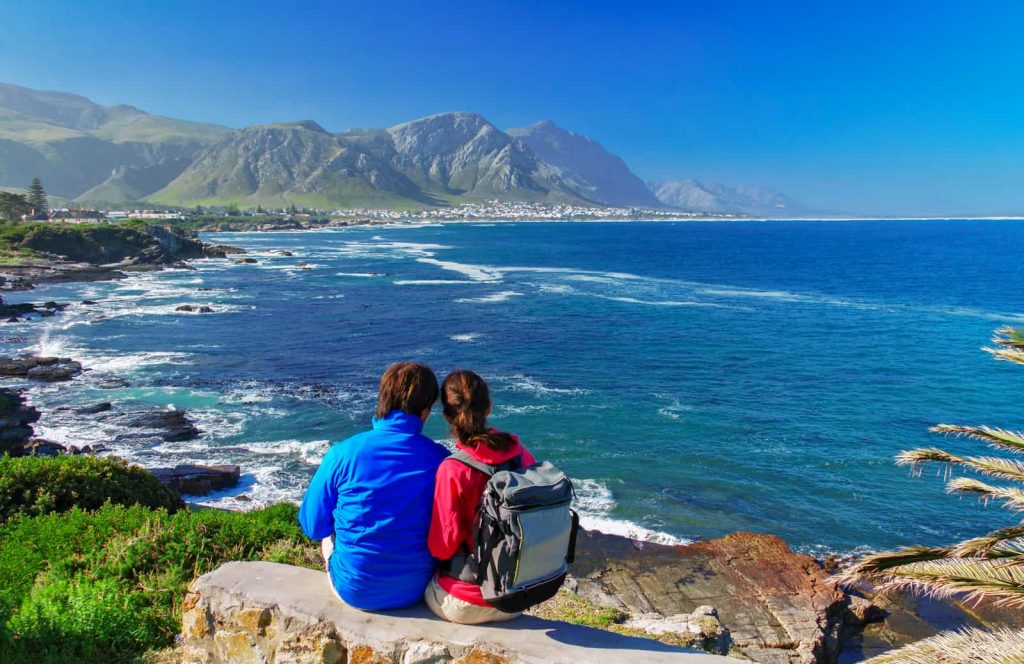
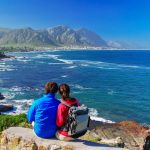
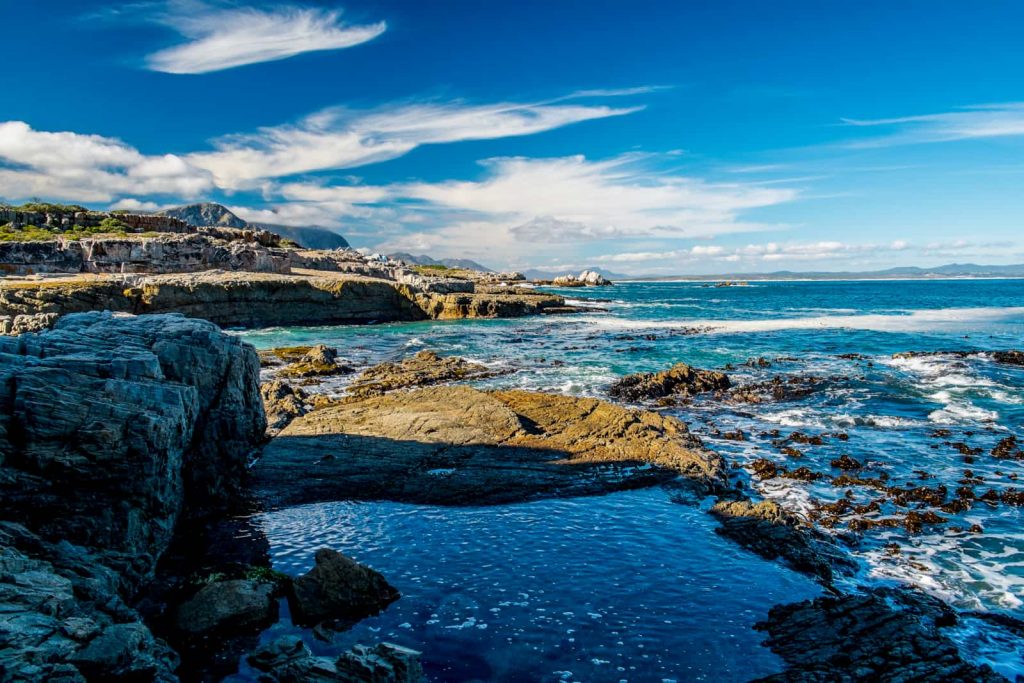
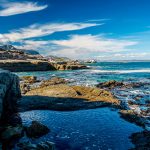
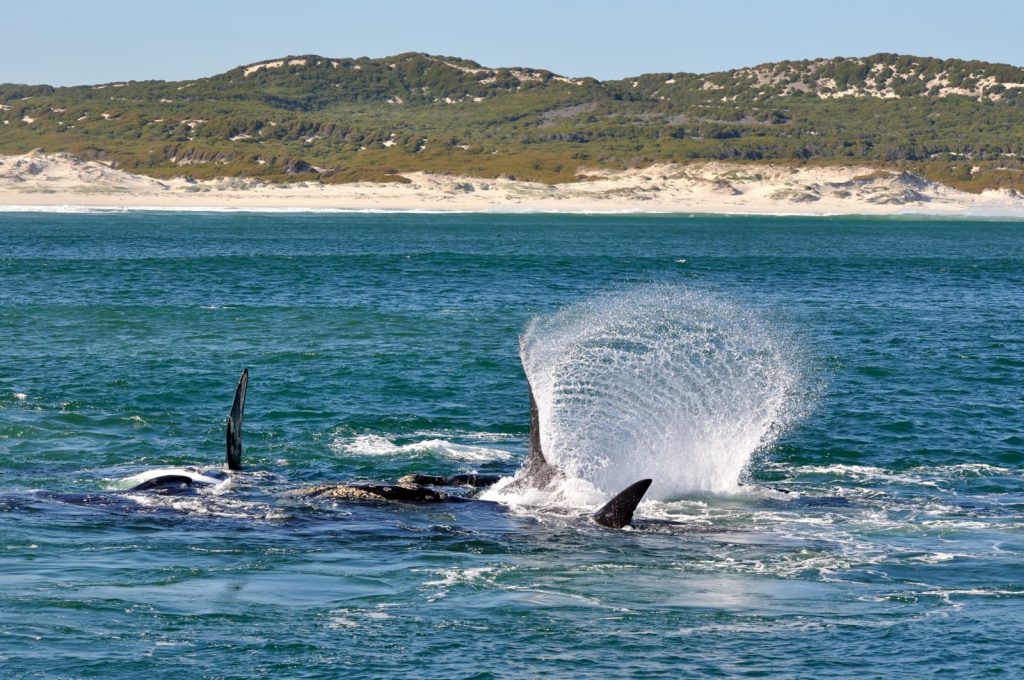
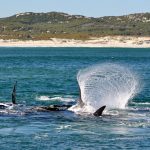
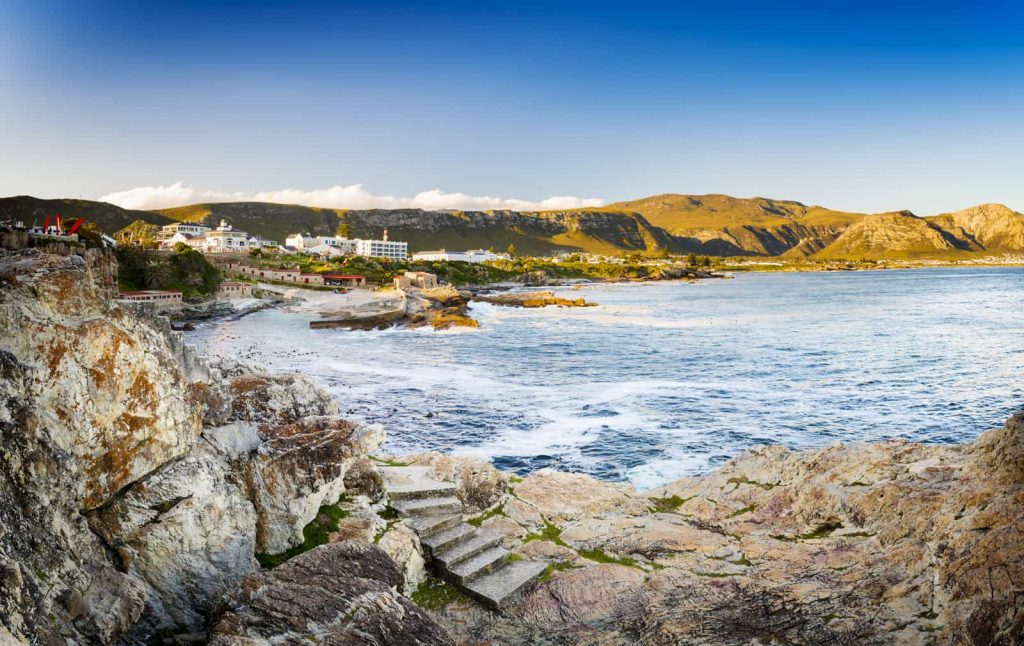
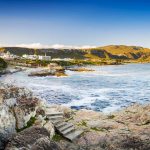
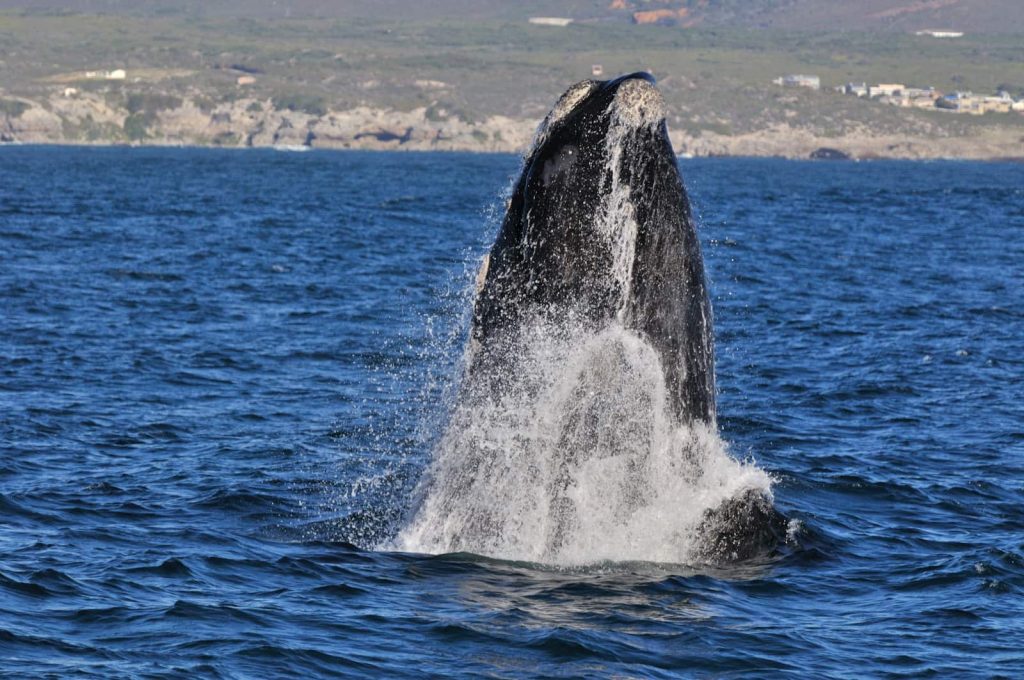
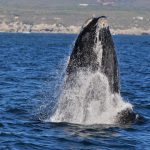
Whale Route Drive Times (listed East to West)
- Mossel Bay to De Hoop – 2 hr 30 min
- De Hoop to Gansbaai – 1 hr 45 min
- Gansbaai to De Kelders – 5 min
- De Kelders to Hermanus – 40 min
- Hermanus to Cape Town – 1 hr 30 min
